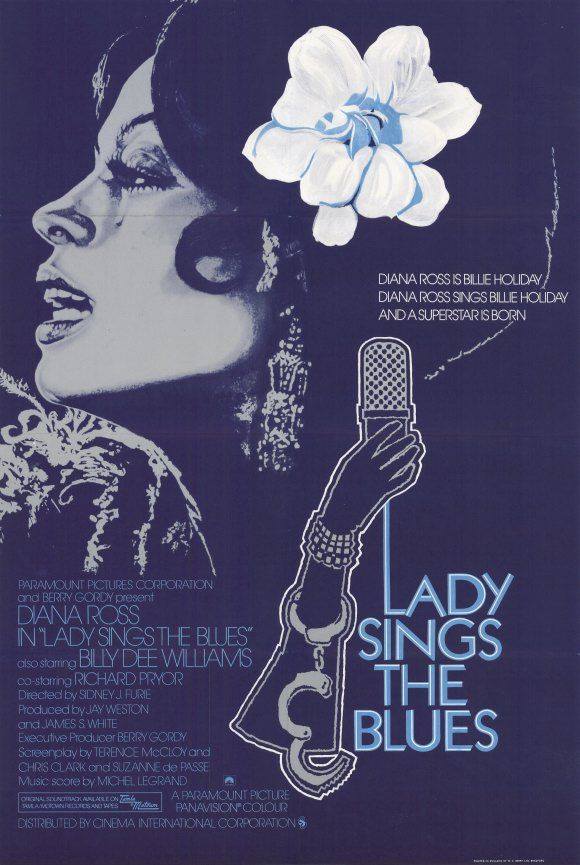
Released: 12 October 1972
Produced by Brad Dexter, Berry Gordy, Jay Weston, James S. White
Screenplay by Suzanne de Passe, Chris Clark, Terence McCloy
Starring Diana Ross as Billie Holiday, Billie Dee Williams as Louis McKay & Richard Pryor as Piano Man
Music by Gil Askey and Michael Legrand
Distributed by Paramount Pictures
Running Time: 144 minutes
Diana Ross broke down many racial barriers with her portrayal of the legendary jazz and blues singer Billie Holiday in the award-winning Lady Sings The Blues and marked a turning point in black cinematic history, helping to take black films into the mainstream.
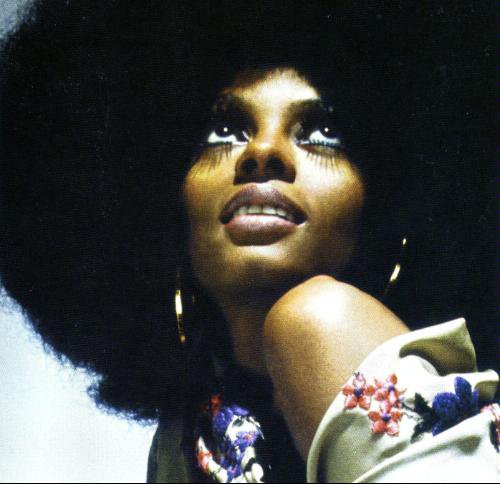
The Motown legend had not long left The Supremes after scoring twelve number one hit singles between 1964-69 as their lead singer. Her solo career began in 1970 and her remake of Marvin Gaye & Tammi Terrell’s classic 1967 hit ‘Ain’t No Mountain High Enough’ which catapulted to no.1 on the pop and R&B charts. Anyone who doubted Diana Ross couldn’t make it without The Supremes were silenced. However, her biggest challenge came with her portrayal of the late, great Jazz & Blues legend Billie “Lady Day” Holiday in Lady Sings The Blues.
 Billie Holiday was born Eleonora Fagin on 7 April 1915 in Baltimore, Maryland. Her autobiography Lady Sings The Blues, co-written with William Duffy and published in 1956, caused a national sensation with its controversial content and a series of atrocities that happened in her childhood that left her emotionally scarred for life. A tragic childhood is an understatement!
Billie Holiday was born Eleonora Fagin on 7 April 1915 in Baltimore, Maryland. Her autobiography Lady Sings The Blues, co-written with William Duffy and published in 1956, caused a national sensation with its controversial content and a series of atrocities that happened in her childhood that left her emotionally scarred for life. A tragic childhood is an understatement!
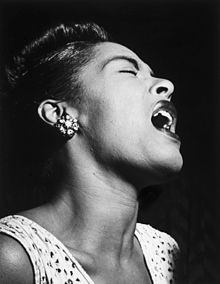 It began: ‘Mom and Pop were just a couple of kids when they got married. He was eighteen, she was sixteen and I was three.’
It began: ‘Mom and Pop were just a couple of kids when they got married. He was eighteen, she was sixteen and I was three.’
As a youngster, Billie suffered trauma after trauma. She was assaulted by an older cousin and her great-grandmother, who had been an invalid for several years, died while holding Billie in her grasp. These events naturally had a devastating effect on the young Billie, and she spent four weeks in hospital suffering from severe shock. At the tender age of ten, a man attempted to rape her, and for this, she spent two days in prison. In a Catholic home for punishment, she was locked in a room with the body of a dead girl. She also suffered at the hands of an aunt who looked after her, subjected to regular brutal beatings. The horror and the incessant abuse took its toll on Billie as an adult, leaving her in a fragile state: acute loneliness and vulnerability with aching feelings of inadequacy.

It was in her teenage years that Billie turned to prostitution, but when she refused to serve a black client, she was imprisoned. During this incarceration, she found herself having to fight off the advances of a lesbian, the altercation ending up with her sentence being extended. Billie eventually escaped life as a prostitute and found her way into show business. But her problems didn’t end there. She suffered many untold indignities because of her race and in a desperate attempt to obliterate all her problems, ended up turning to drugs. Billie once remarked that her only real escape in life was singing, and listening to her music, you can hear that she absorbed the sentiments of a song, her emotions deeply stirred and crying from the soul. It has even been said that several people committed suicide when she sang ‘Gloomy Sunday’.
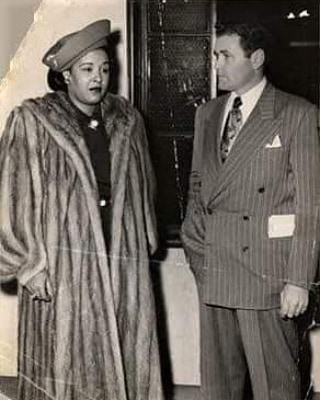
Like so many talented but tortured souls, Billie died young. She was even arrested on her death bed by narcotics agents who had been hounding her for the majority of her short life. She was forty-four when she passed away on 7 July 1959 in New York’s Metropolitan Hospital. Billie amassed a fortune in her career, yet when she died, all she had was seven hundred and fifty dollars strapped to her leg and just seventy cents in the bank. It goes without saying that Billie Holiday’s legacy as one of America’s greatest blues singers has influenced the majority of contemporary singers.
In between the horrors she suffered, there were some happy intervals in her life; she became extremely wealthy, was able to find love and live in luxury, and garnered a huge international following that led to global critical acclaim.
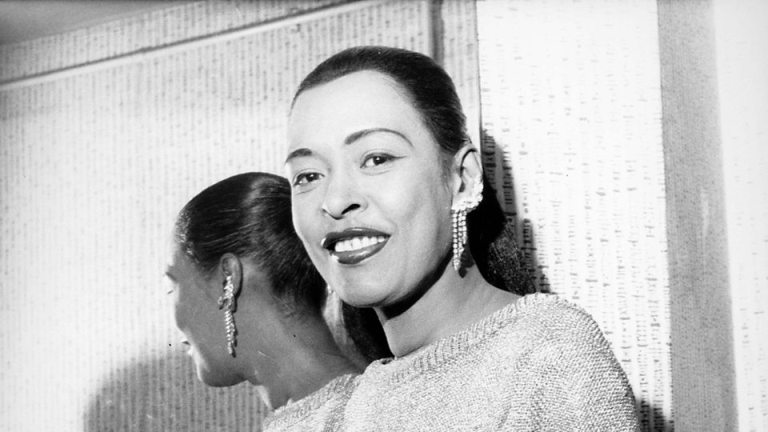
Berry Gordy explained he wanted to make a movie that also captured her legacy and celebrated success, saying had they made a movie that focused on her autobiography, it would have been more like a documentary about a singer who suffered one tragedy after another: “I tried to find the other side of Billie that wasn’t in the book and that’s not on the back of album sleeves. I tried to find the person very few people knew about. There were two sides to Billie. While she was high and tragic and got caught up in the whirlwind of dope, she was also a happy person, a funny and loving person.”
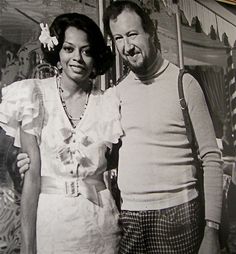
In the late 1960s, producer Jay Weston was developing a project on the life story of Billie Holiday. His previous credits had included co-producing For The Love Of Ivy, starring Sidney Poitier, and he was eager to adapt Billie Holiday’s autobiography for the big screen. To this end, he approached director Sidney Furie (who had worked with stars like Marlon Brando, Frank Sinatra, Robert Redford and Michael Caine) to join him.
Jay Weston’s initial choice for the role of Billie Holiday was actually actress Diana Sands, but Sidney Furie saw Diana Ross in her spectacular 1971 award-winning TV special Diana! and knew instinctively she was the perfect choice.
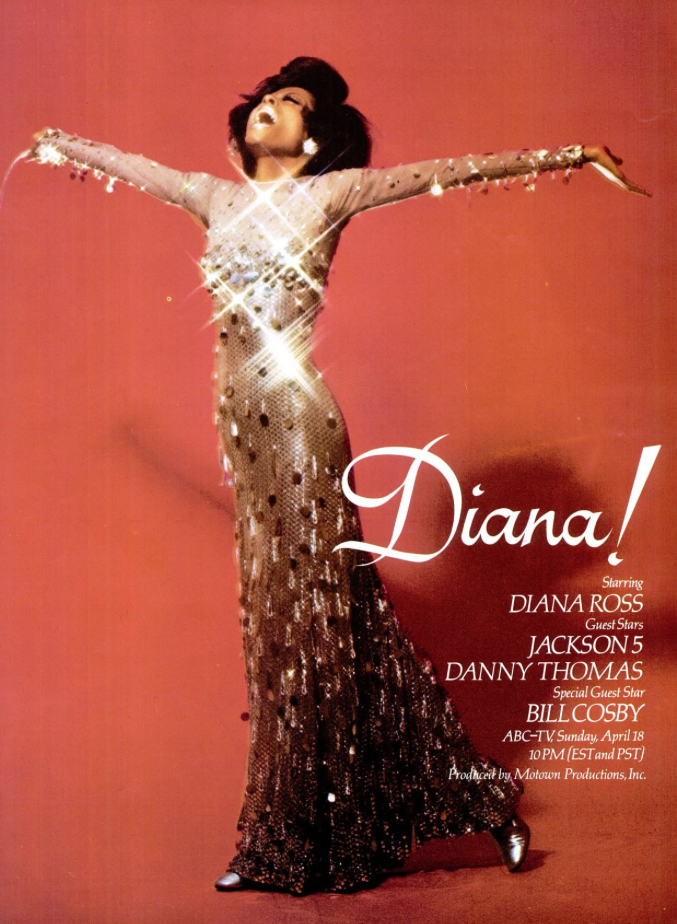
Furie told author J. Randy Taraborelli: “I told him he had the wrong Diana. It should be Diana Ross! Jay told me that as far as he was concerned, Diana Ross was a singer and not an actress. But I explained I’d just seen her in this television special, and I felt she was just absolutely brilliant playing Chaplin, Marx and Fields. When a director reads an actress for a part in the film, she usually gets the whole movie based on how well she reads one scene. Diana did three incredible readings for me that night as I sat watching in my living room. It was obvious to me. If you can play comedy, you can play Hamlet, and I told Jay Weston, ‘That girl Diana Ross, she’s an actress. I’m convinced!’”
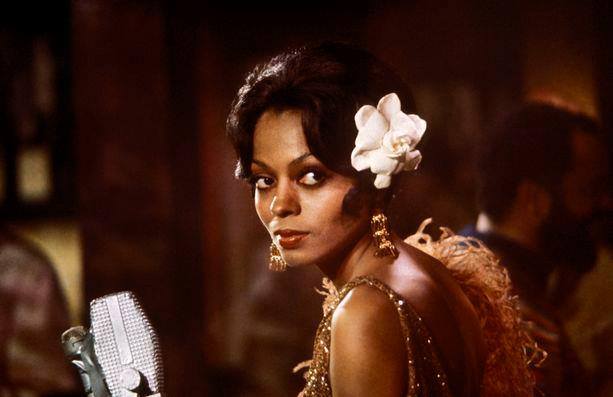
When Jay and Sidney Furie first approached Berry Gordy with their idea, he was unsure about the proposal as Furie further recalled to Taraborelli: “The next I knew, I was taken into a meeting with Berry Gordy. A tape recorder was running—he taped all his meetings. He asked us why we wanted Diana of all people. He wasn’t even sure she could act, and this seemed like such a massive project to him. I explained to him I knew she had the ability just by watching that first television special. I was certain she would be nominated for an Oscar in this kind of role, a classic Hollywood role. He then made a long, involved speech about how this was a pivotal point in her career, leaving The Supremes and all, and he wasn’t about to take any chances.”
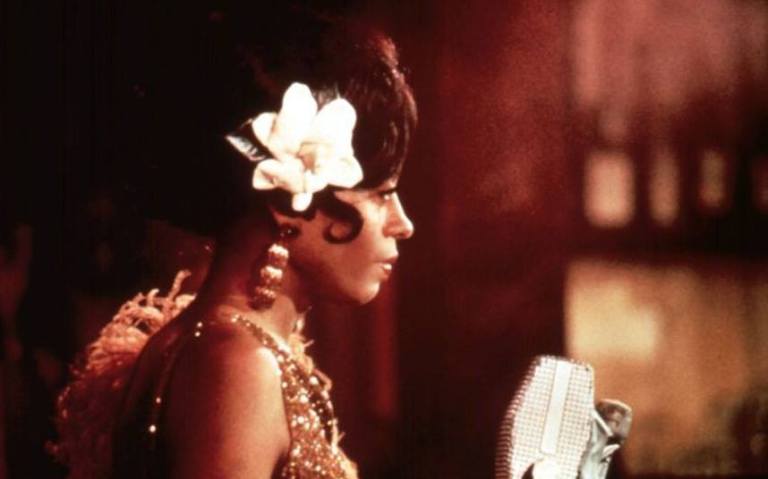
Unperturbed, they set out to change Berry’s mind.
Jay Weston explained on the TV documentary, E! True Hollywood: “We were both playing pool in the poolroom and trying to explain it’s not just a story of a black junkie singer but a movie about courage and a great woman. It was a very positive film, not a negative film, and at the end he looked at the both of us and said, ‘Okay, you got her.’”
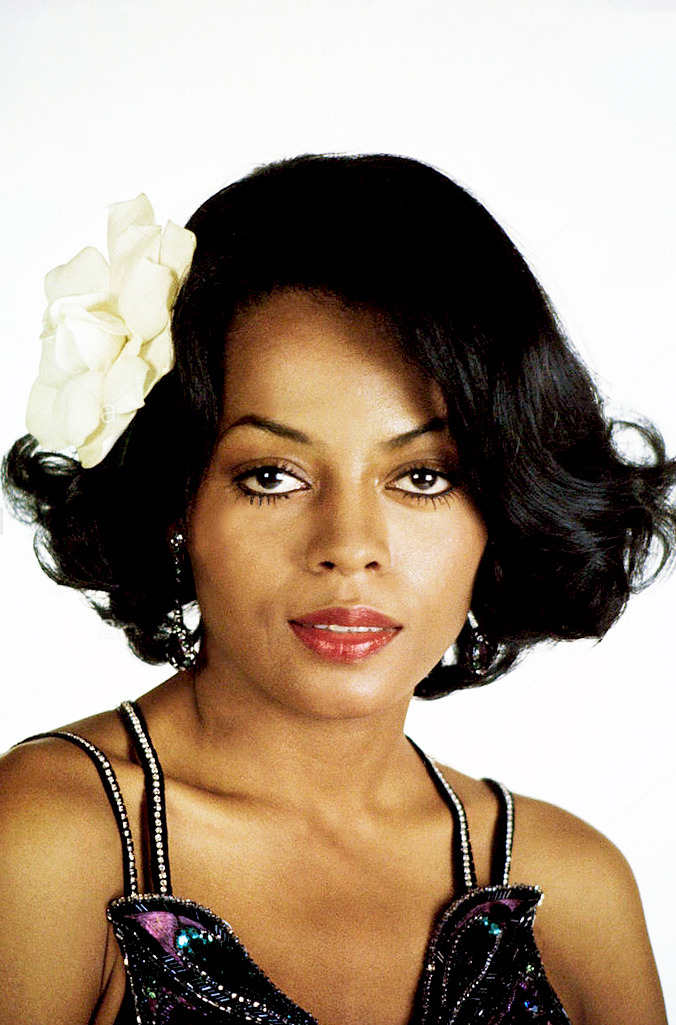
After financing the writing of a preliminary screenplay, he made a series of suggestions before a revised screenplay was sent to Fox and then to Paramount. Frank Yablans, president of Paramount Pictures, made the most lucrative offer for Lady Sings The Blues.
Prior to beginning production, Sidney Furie was already immensely impressed with what he recalled as Diana’s “amazing grace, wit and charm.”
Sidney reminisced further: “The first time I really had a chance to talk with her was over lunch at Le St. Germain Restaurant next to Paramount Studios. I thought she was the most incredibly beautiful, wonderful woman I’d ever met. It was love for lunch. For those few moments of drinking fancy white wine and eating French food in this chic restaurant, I was madly in love with Diana Ross, and then I went home and fell back in love with my wife and kids. I was so enthralled by her, I don’t even remember what we talked about. I do remember, though, she was so comfortable and at ease, even though I imagine she was secretly very nervous. Diana’s such a good actress, she even pulled off the role of up-and-coming movie starlet having lunch with her future director in a classy restaurant!”
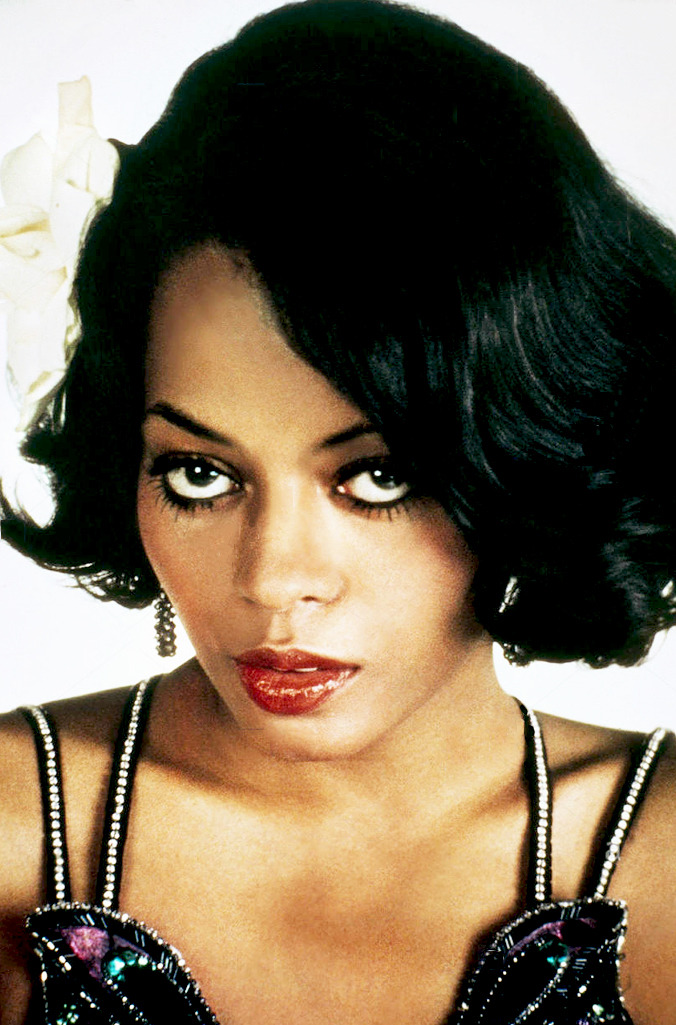
I’m sure you know that many of the incidents in the movie are completely fictionalised, reworked for dramatic clarity. However, the spirit and essence of Billie Holiday was captured both admirably and beautifully. Diana researched Billie’s life thoroughly and got into the project subliminally. She listened to nothing but Billie’s music for months on end, often falling asleep with her headphones on.
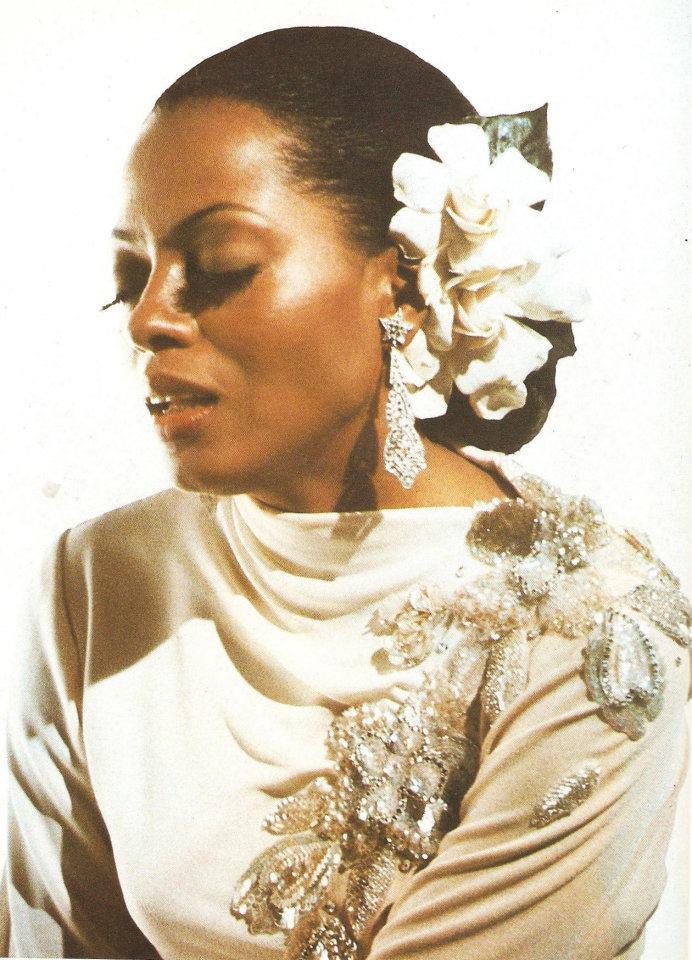
Motown executive and personal friend Suzanne De Passe, also quoted on E! True Hollywood, remembered Diana’s intense preparation: “I’ve never seen anybody woodshed like that. I mean she studied, she listened. There was even one point when she sounded more like Billie Holiday than Billie Holiday, and Berry Gordy told her to ‘back off and put a little more Diana Ross back in there’ because she attacked this role with a vengeance.”
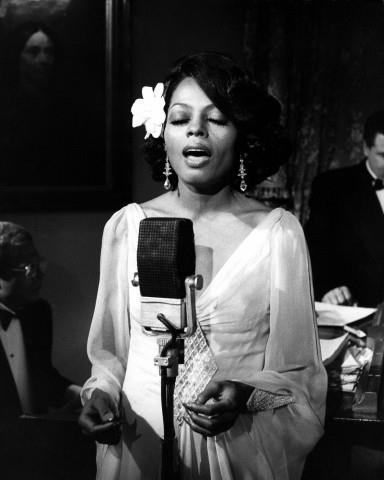
The next task on hand was casting the role of Diana’s leading man, the role of Louis McKay. Berry Gordy initially had The Four Tops’ Levi Stubbs in mind, but he didn’t want to leave his group, so established actor Billy Dee Williams was approached.
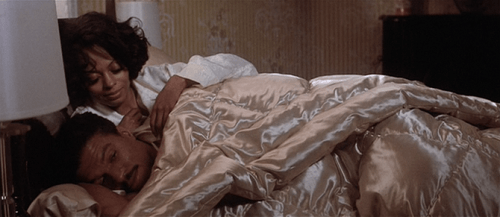
Jay Weston: “We brought Billy Dee Williams in to do it with Diana. I dressed him in this white suit, white tie, and she did an interplay with him with the dialogue from a scene. Following that, the next afternoon, she and I sat in the screening room, and when we looked at this test, I remember Diana scrunching down in her chair, and in her little voice she said, ‘He’s the one.’”

Diana recalled their meeting on the 2005 DVD release of the film: “As soon as I met him, he was very charismatic and we just hit it off quickly. But I think he might have that chemistry with any woman, he’s just like that. (Laughing) He’s a woman’s man. He likes women!”
Meantime, Billy Dee Williams said to J. Randy Taraborelli that: “The whole time we were working on Lady Sings The Blues, there was a strong chemistry going on between Diana and me. I’ve always admired her and had a special respect for her abilities. I think it was because of her depth that Diana and I dug each other. And what a mouth! That woman has a fantastic mouth! We had to do one of the kissing scenes over ten times, and each time, there was Berry Gordy, moving around in the background, trying to get a closer look at what we were doing to make sure we weren’t enjoying it too much.”
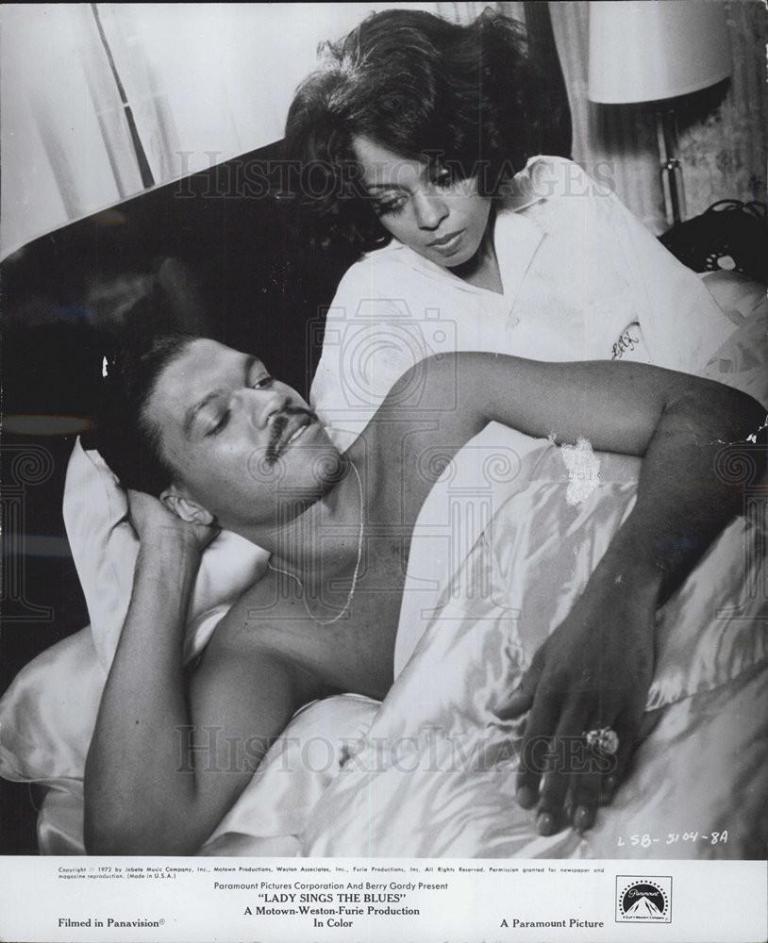
Richard Pryor played the role of Piano Man and was truly superb as Billie’s loveable good-spirited friend. There’s also a sparkling chemistry between Diana and Richard which really comes across.
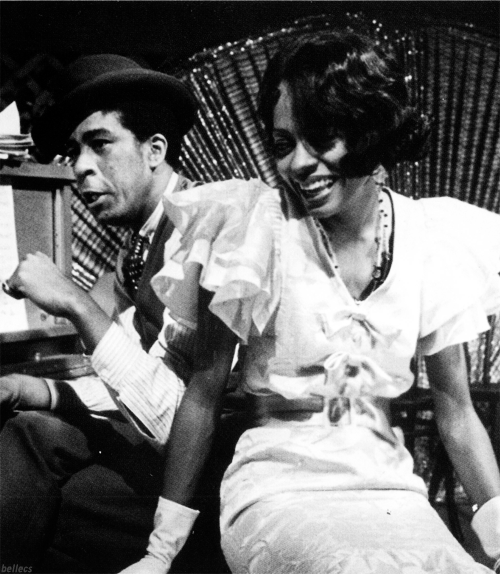
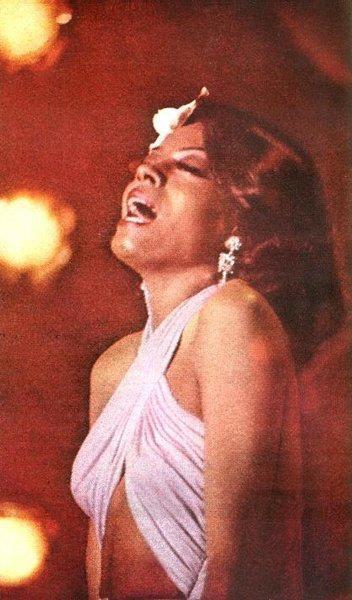 She said: “You know, we became real close. Every day, it wasn’t a job. We just worked together really easily.”
She said: “You know, we became real close. Every day, it wasn’t a job. We just worked together really easily.”
For his audition, Sidney Furie asked him to improvise a scene showing his reaction to catching Billie Holiday doing drugs: “I closed my eyes for a moment…I knew women like her. I knew that if I was her friend and caught her doing drugs, I wouldn’t be surprised. I wouldn’t get angry. I might not like it, but I’d understand, I’d be sympathetic to her need. So I pretended to fix up some shit as I talked to her. Said, ‘Baby, how could you be doin’, you know…don’t be thinkin’ you’re hidin’ it.’ They gave me the role of Piano Man right then and there. I modelled myself after a piano player I knew from Peoria (IL), and I tried not to get high as we shot the movie. Diana Ross was great, mysterious, gorgeous.”
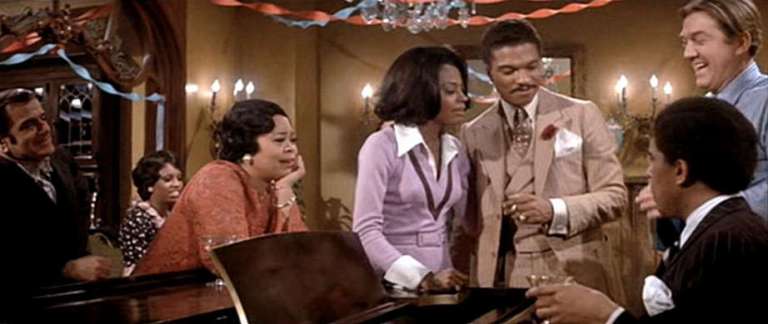
When word broke out about Diana Ross playing Billie Holiday, some of Hollywood’s movie and music critics were infuriated, and Paramount faced an overwhelming backlash that made column headlines. Most jazz purists, film critics and many fans of both Billie and Diana considered this miscasting. Understandably, this scathing negativity made Diana feel hurt and confused.
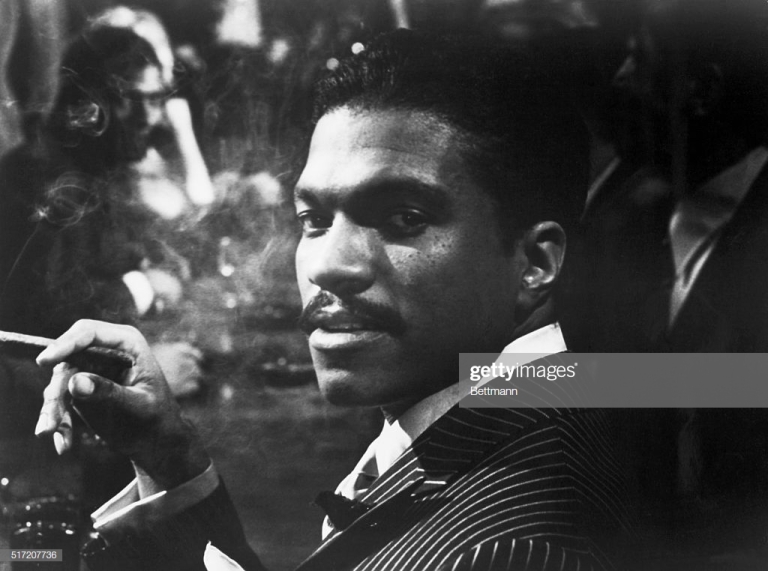
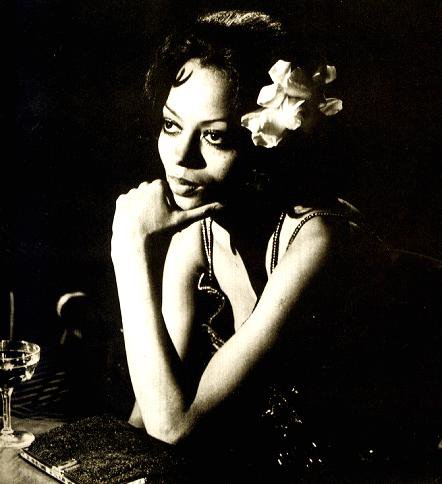
She once reflected: “My God, what I had done to deserve this total resentment? And from my own race and people who were my fans? There was such a total ‘No, you can’t do it’ that it frightened the hell out of me. It all came to a head at one point when I actually called Berry and said, ‘Please, get me out of this! Is it too late to back out?’ When he told me it was much too late, what else could I do? I gathered myself together and got my script out. I was pregnant with Rhonda at the time and wrote on the front cover of that script, ‘The most important thing in my life is to have my baby. The second most important thing is this script. I lived by that.”

Filming commenced on 6 December 1971. The script was written by Chris Clark (the one-time Motown recording artist), Suzanne De Passe and Terence McCloy. The initial agreement for the film was two million pounds, but costs soared, especially as Diana was unhappy with her costumes. New gowns were designed by Bob Mackie and Ray Aghayan and were made up by Elizabeth Courtney.
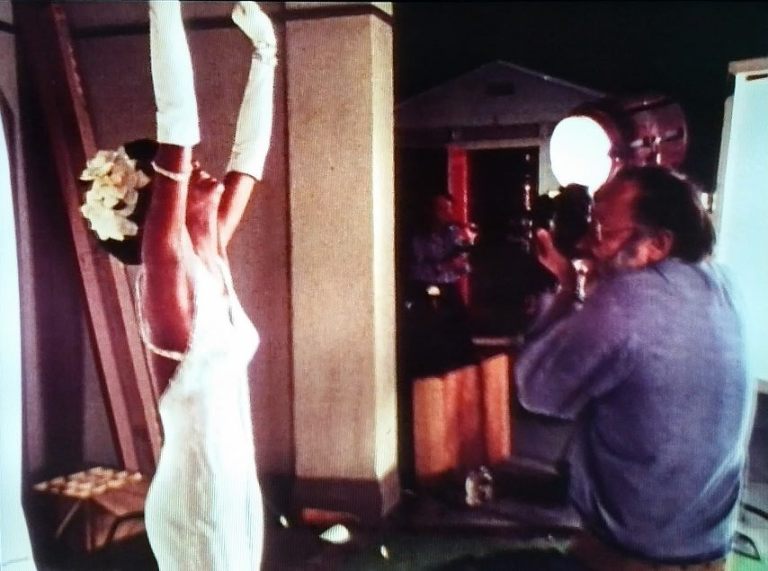
Trouble then loomed when the film exceeded its budget and Paramount Pictures refused to finance it any more, sending shockwaves through Motown. After all the hard work and preparation, it looked as though the film wasn’t going to go ahead. Berry decided to take a gamble and bought the film back.
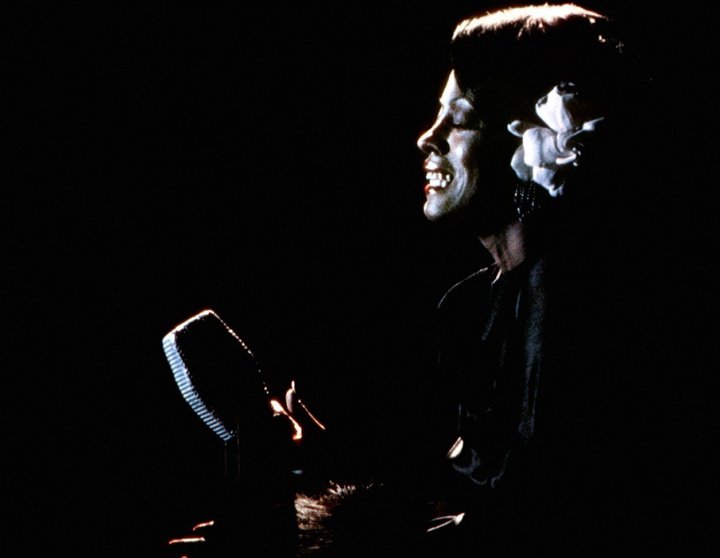
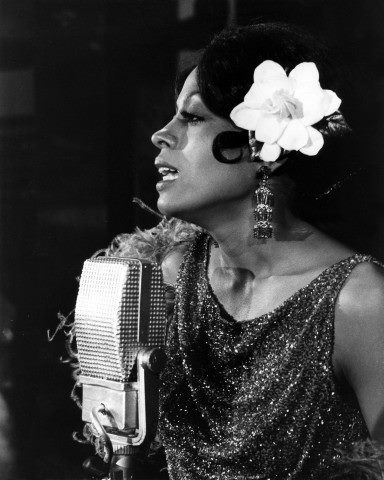
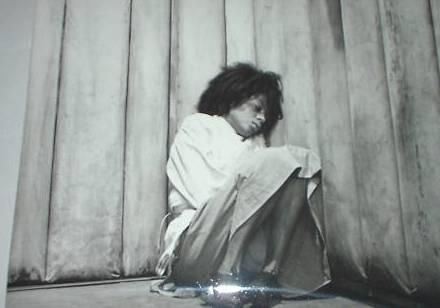
Diana was touched by this gratifying show of faith and was quoted in the DVD of Lady Sings The Blues: “I’ve always thought if you believe in me, I can do whatever you think I can do. Berry Gordy believed in me. It was like a big challenge for me. Something brand new, something special. I’ve never studied acting. I’ve never read a script. I made it my story, not Billie Holiday’s story. I made it real for me as if I was living all those moments. When it was time for me to do the film, I spent a lot of time in my research, trying to understand it, owning it, but one of the things I didn’t want to do is try and copy Billie Holiday. I didn’t want to try and copy her sound. I didn’t try to imitate it anyway. I just lived with the music for almost a year before we actually recorded the music.”
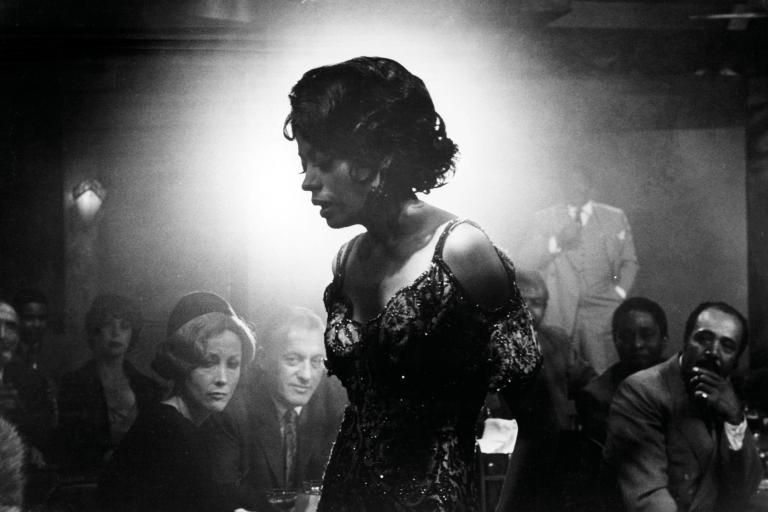
Berry Gordy was also dismayed when Paramount Pictures then wanted to cut the film down to just ninety-minutes of screen time: “They wanted to butcher it. You cannot take the life of Billie Holiday and do it in a respectable manner in less than the amount of time necessary.” Eventually, the film was trimmed down to a running time of two hours and twenty-four minutes.
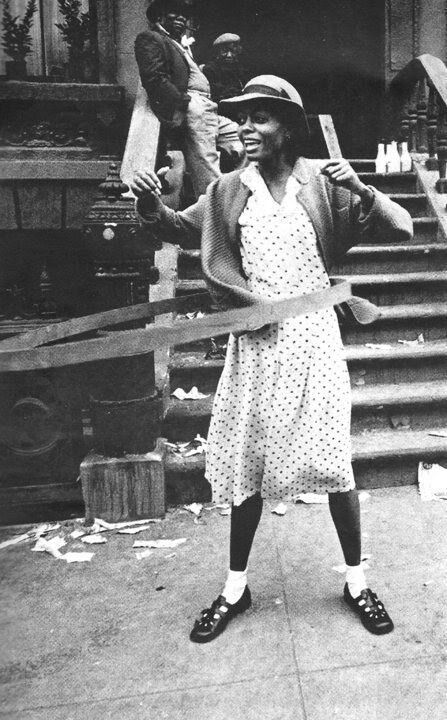
Within the first ten minutes of the story, fifteen-year-old Billie is raped by an alcoholic. Unable to stay with her mother, she then goes on to work as a prostitute in a brothel run by her mother’s friend. Unable to become accustomed to this lifestyle, Billie begins to work in a local nightclub as a singer and gradually rises to become one of the era’s greatest jazz/blues singers.
Lady Sings The Blues focuses mainly on Billie’s complex relationship with her husband, Louis McKay. It also details her physical decline into heroin addiction. Watching Diana play those harrowing scenes of Billie going cold turkey while locked away in a padded cell makes you appreciate how deep her talent was. Stark and hard-hitting, Diana’s almost unrecognisable as she screams and bashes her head against the wall. There was no holding her back; she just went for it as required…and more. Her acting appears to be purely instinctive which serves to intensify her performance.
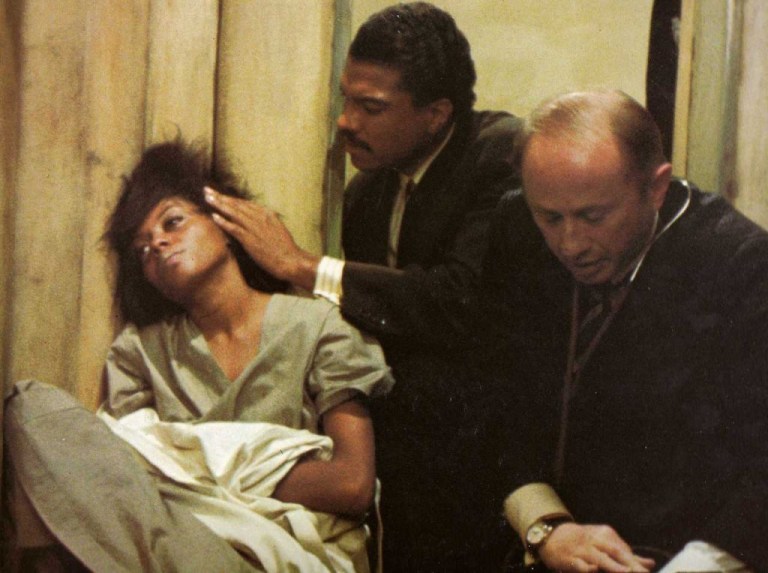
Gil Askey recalled to Taraborelli: “It took all day, and she banged her head all over the place, really beating herself up. It was just terrible to watch. She took it all so seriously, it was kind of frightening, but as she got into the film, she became more comfortable. She started to see that she was pretty good and started to relax. She began to realise this was just Lady Sings The Blues, not some kind of test.”
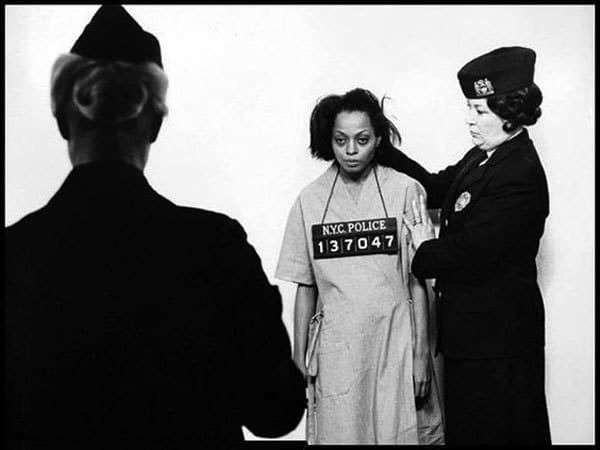
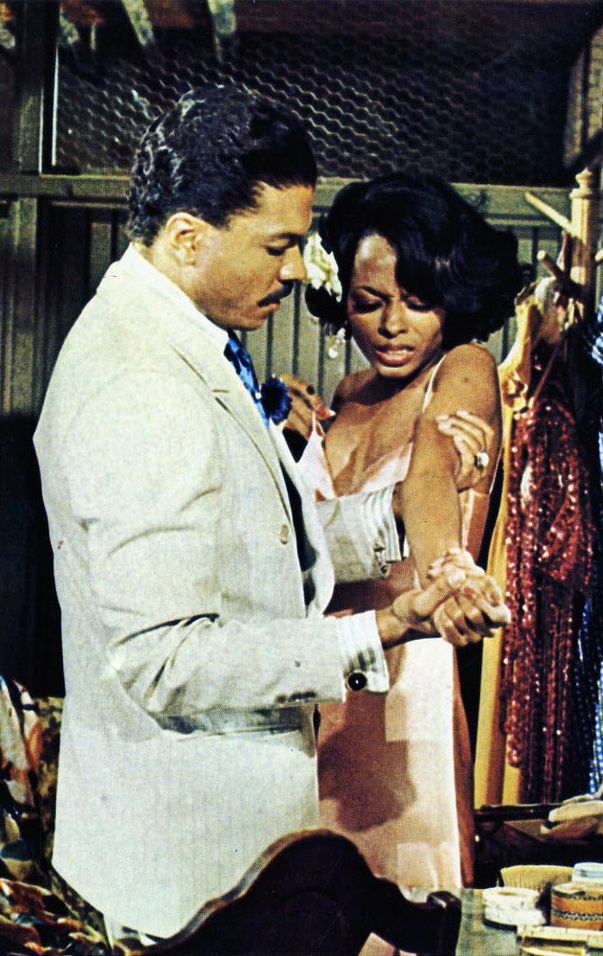
One of the scenes Diana found most difficult was where the young Billie Holiday was performing for the first time at a Harlem nightclub. It was customary for the entertainers to pick twenty-dollar bills from customers’ outstretched hands with their private parts. The script didn’t dictate Diana should perform such an act, but she was still worried about having to play such a scene, in which Billie tries to please the audience in the way other singers on the same bill did.
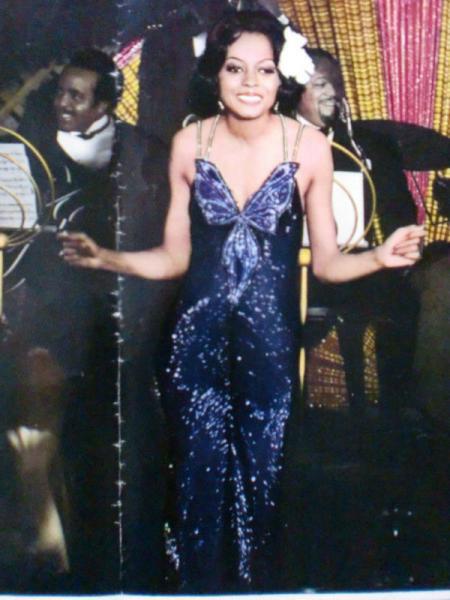
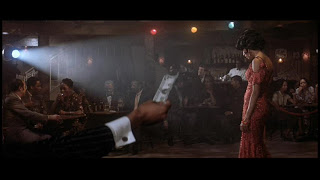
Gil Askey remembered: “Diana was very, very modest about her body. She never liked to change clothes in front of anybody—not the other Supremes, not her mother, nobody! So this scene seemed a little explicit to her and it worried her. I noticed the tension and went out and got her a bottle of cognac. I made her take a few sips to relax. She took a deep breath and went out there to do the scene. Not that she had to be loaded, but I did want to loosen her up. Everything the singers were supposed to do that repulsed her came out in her acting.”
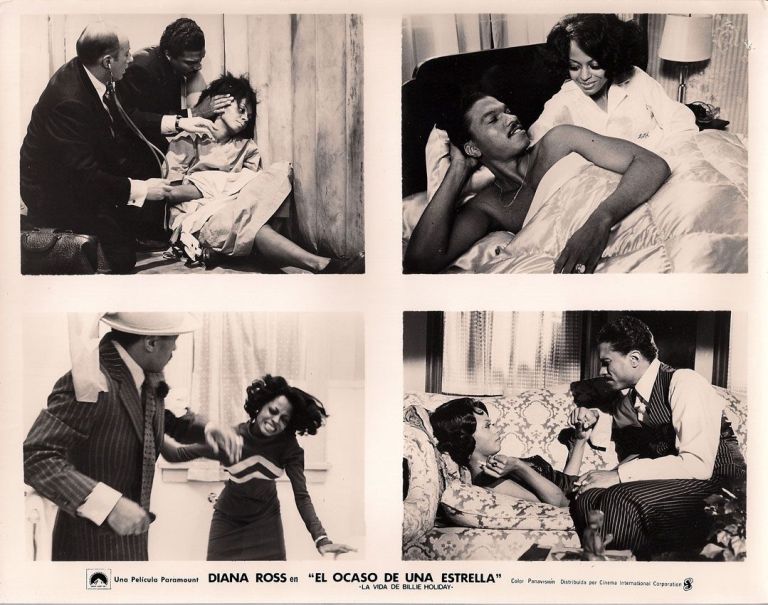
 As Billie refuses to do what’s expected of her, the crowd boo and sneer at her, but she remains dignified and continues singing a heartfelt ‘The Man I Love’. After the performance, a hurt and terribly disappointed Billie can do nothing but just hang her head as the customers continue to boo her. This is when the viewer first gets to hear Louis McKay, when he gently holds up a twenty-dollar note to her. “You want my arm to fall off?” he asks her as she stands there looking bemused. He flashes her a dazzling, reassuring smile. It’s love at first sight. Hesitantly taking the money and Billie’s confidence restored, she lurches into a bubbly version of Them There Eyes, at which point all the customers then follow Louis’ direction and actually hand the money to her in her hand. Billie emerges as victorious. A wonderful scene.
As Billie refuses to do what’s expected of her, the crowd boo and sneer at her, but she remains dignified and continues singing a heartfelt ‘The Man I Love’. After the performance, a hurt and terribly disappointed Billie can do nothing but just hang her head as the customers continue to boo her. This is when the viewer first gets to hear Louis McKay, when he gently holds up a twenty-dollar note to her. “You want my arm to fall off?” he asks her as she stands there looking bemused. He flashes her a dazzling, reassuring smile. It’s love at first sight. Hesitantly taking the money and Billie’s confidence restored, she lurches into a bubbly version of Them There Eyes, at which point all the customers then follow Louis’ direction and actually hand the money to her in her hand. Billie emerges as victorious. A wonderful scene.

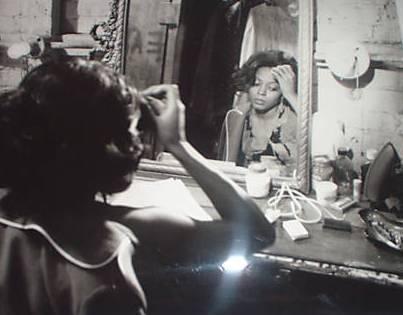
There’s another devastating scene between Billie and Louis when he sees that, despite her promise to quit, she’s still hooked on heroin. She’s desperate for a fix, and Louis prolongs her agony by not letting her in the bathroom where she’s hidden a stash. Unable to contain her anguish and desperation, Billie slams a saucepan up against the door, aiming for his head, and bursts into the bathroom. A struggle ensues; Billie grabs hold of a blade, prepared to kill him if need be—anything so she can shoot up. ‘Give it to me, GIVE IT TO ME!’ screams an enraged, sweating Billie. Louis finally relents and throws the bag of heroin at her, whereupon Billie strips off most of her clothes and injects herself. The last part of this scene shows her as high as kite; a devastated Louis leaves her alone. This is one hell of a powerful scene, and Diana’s compelling portrayal of the drug-addicted Billie is stark and totally convincing.
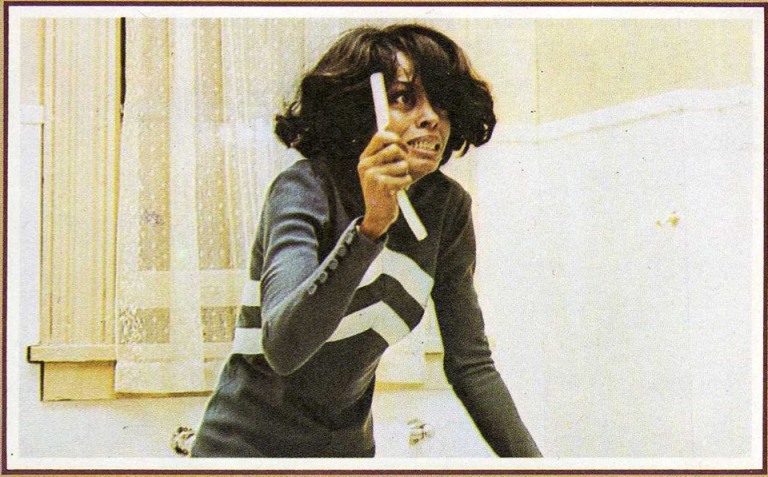
Billy Dee Williams remembers the scene well: “She was so into what she was doing. She even hurt herself, as a matter of fact!”
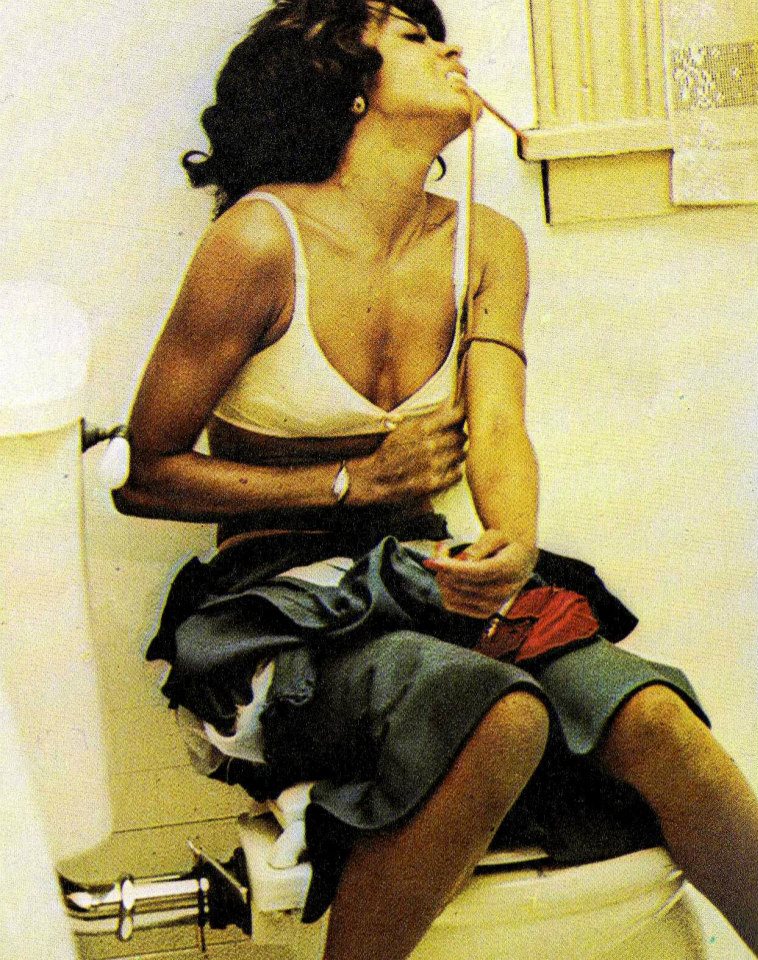
Director, Sidney Furie: “What a scene that was! She was a madwoman, triggered by something in her past maybe. Or maybe she was just being a great actress. It was all so real we couldn’t tell.
”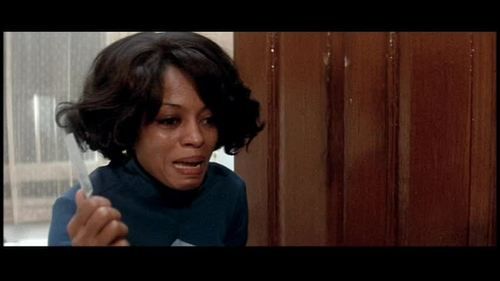

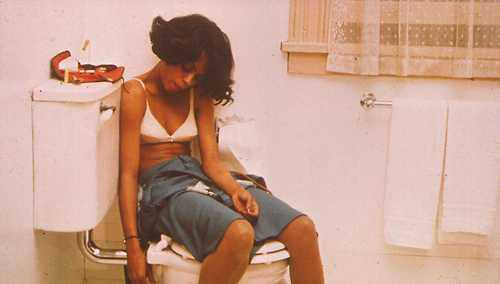
Diana worked over twelve hours a day during her forty-one days of shooting.
She recalled: “I was given my own space on the Paramount lot where we were shooting. I recreated Billie’s original bedroom, her house, her dressing room. I had some of her actual things in these rooms, and I’d be there before six o’clock every morning. There I’d be, in Billie’s Holiday’s life, until I left at night.”
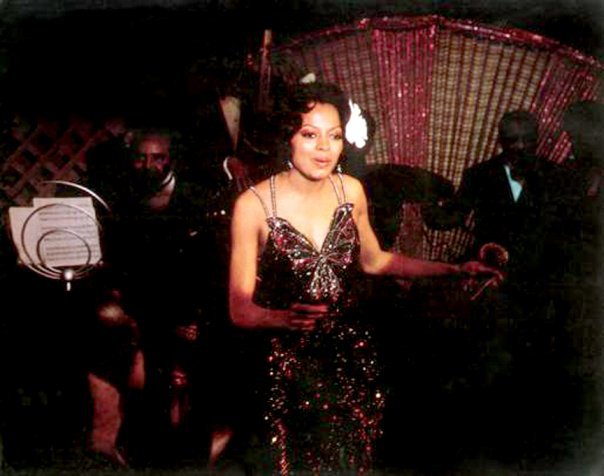
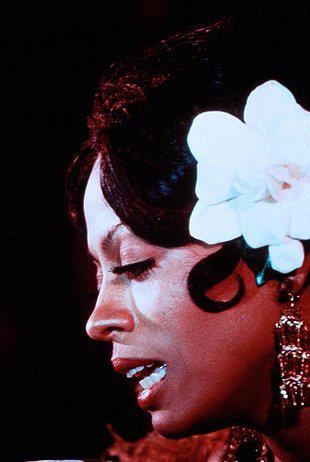 Sidney Furie remembered to J. Randy Taraborelli that several of the scenes were improvised: “Diana worked by improvisation quite a bit. I’d explain to her what we wanted, and she’d just roll with it as Billie Holiday. She can actually make up dialogue while the camera is rolling…and who else can do that? I can’t tell you of a single big star I’ve ever worked with, besides Diana, who could do that and pull it off.”
Sidney Furie remembered to J. Randy Taraborelli that several of the scenes were improvised: “Diana worked by improvisation quite a bit. I’d explain to her what we wanted, and she’d just roll with it as Billie Holiday. She can actually make up dialogue while the camera is rolling…and who else can do that? I can’t tell you of a single big star I’ve ever worked with, besides Diana, who could do that and pull it off.”
One such scene was where Louis McKay takes Billie to the Cafe Manhattan on their first date. This was where the chemistry between the two needed to be established, but Furie recalled he felt the dialogue in the script was forced between the two.
So he approached Berry, who in turn then approached Diana and Billy Dee: “What we’re going to do is put our scripts down and ad-lib this one. I told Diana, ‘Billie, you have a major crush on Louis McKay, but you don’t want to be no pushover. You want him to think you’ve been around. And Louis, you’re gonna get her in the end, but you’ve got to fight for it. You’ve got to charm her ass off.’ Diana was ready but Billy Dee was hesitant.”
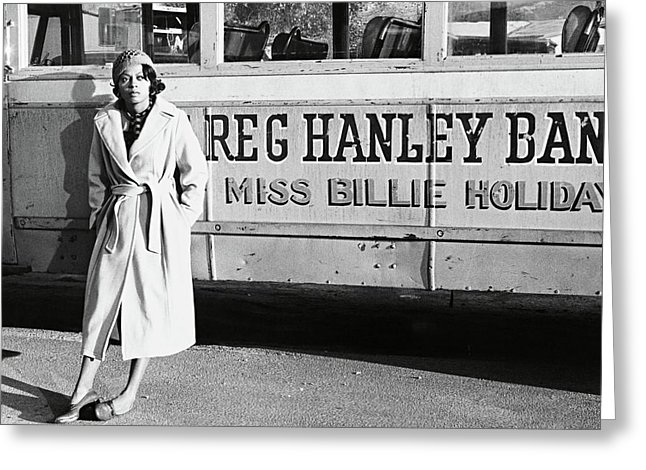
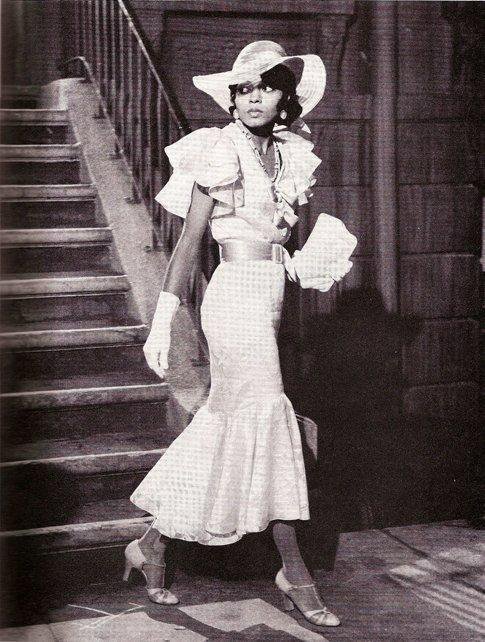
Billy Dee pointed out to Gordy that he had had twenty years’ worth of acting experience and that Gordy had none, basically.
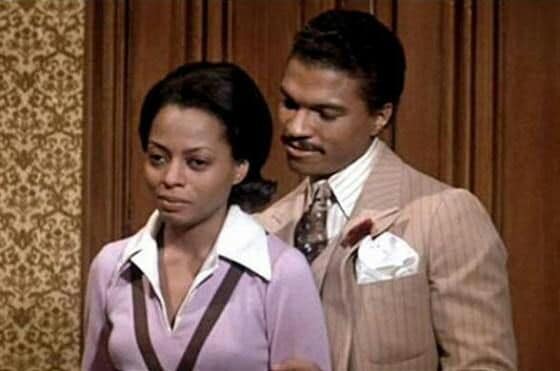
Gordy remembers saying: “Right. But look at it this way. If I make a mistake, I pay for it. If you make a mistake, I pay for it. Get it.” He then recalled that, “Billy and Diana did one of the cutest scenes I’ve ever seen…in one take.”

Another scene showed Diana and Richard Pryor drugged up to their eyeballs one night, before the Piano Man is brutally beaten to death by two drug dealers to whom he owed money. It’s a devastating scene, to say the least, and the power of Diana and Richard’s performances never once dwindles.
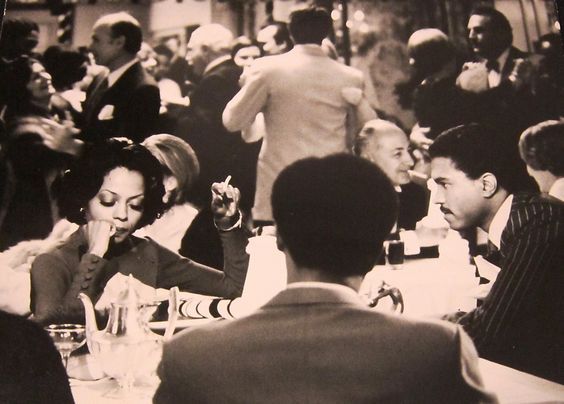
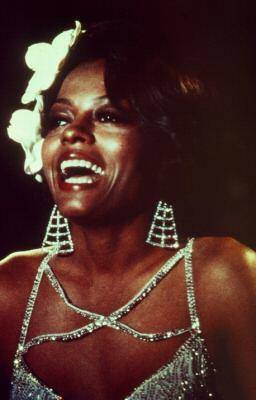
What Lady Sings The Blues often draws upon is racial prejudice, something Diana could relate to after her experiences during the Motor Town Revue in 1962. There’s a very poignant scene in the film where Billie witnesses a man being lynched, and it sends cold shivers down the spine when Diana sings Strange Fruit, a song based on that horrific scene. The Ku Klux Klan sequences are masterfully done, with Diana proving yet again what a dynamite actress she is as she screams at the Klansmen when they try to smash their way on board a coach on which she’s travelling. Every good actor draws on personal experience, and perhaps Diana remembered her own troubled days. Her performances are truly gut-wrenching.
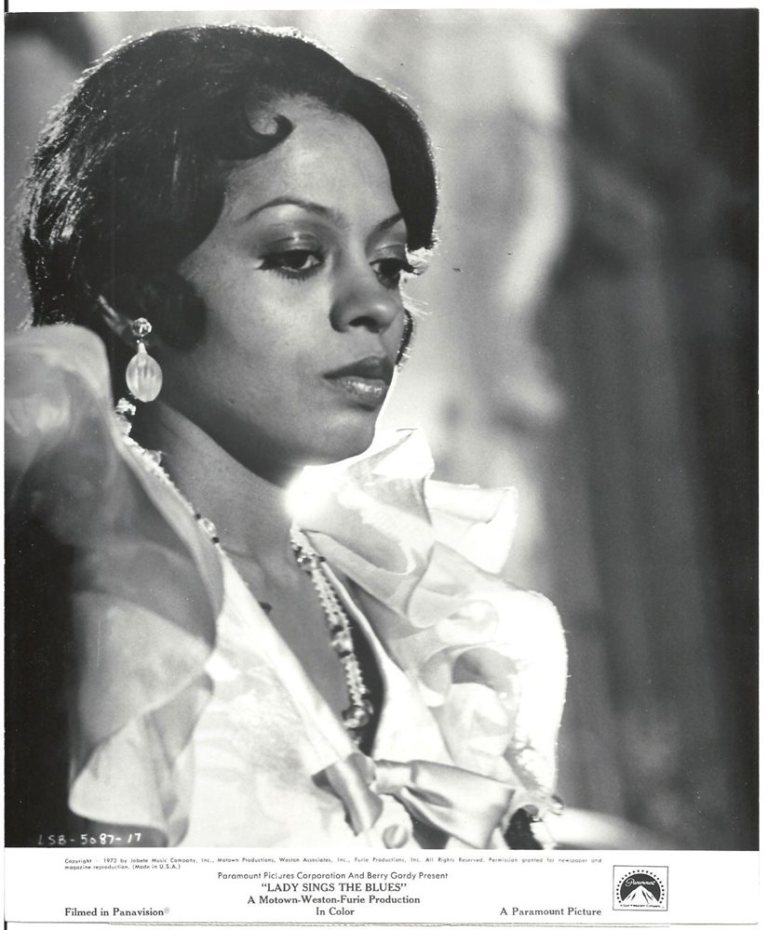

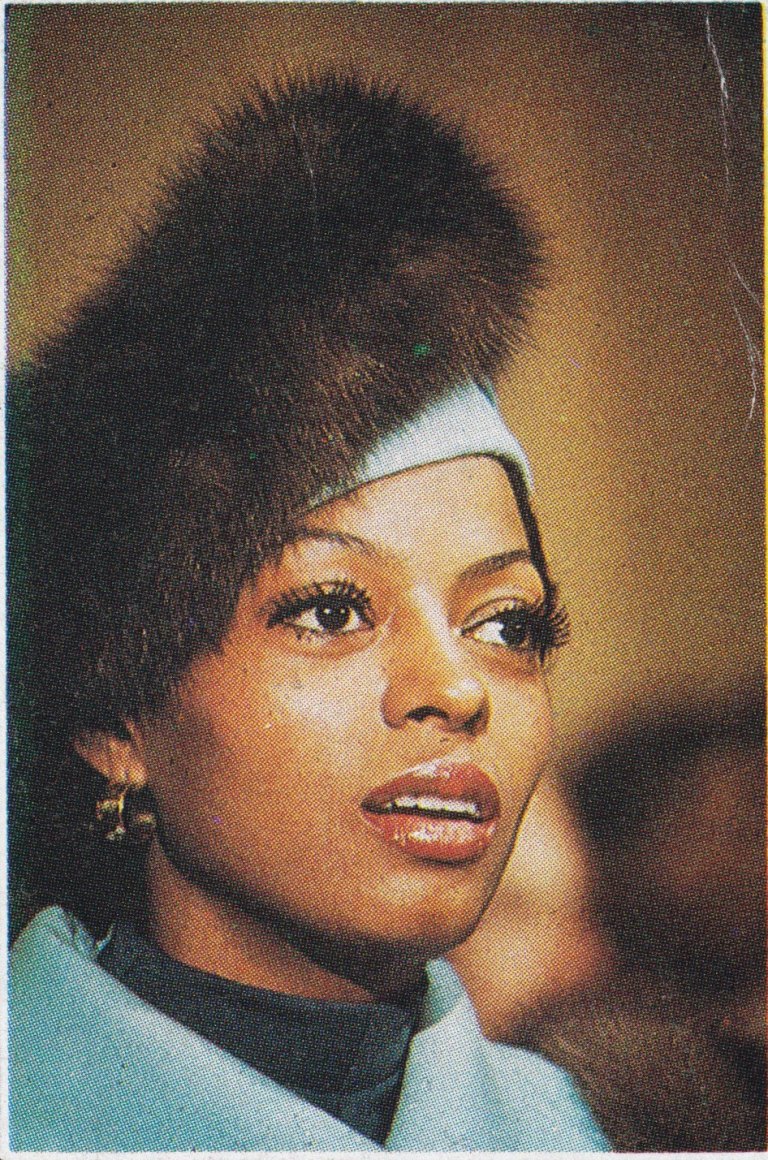
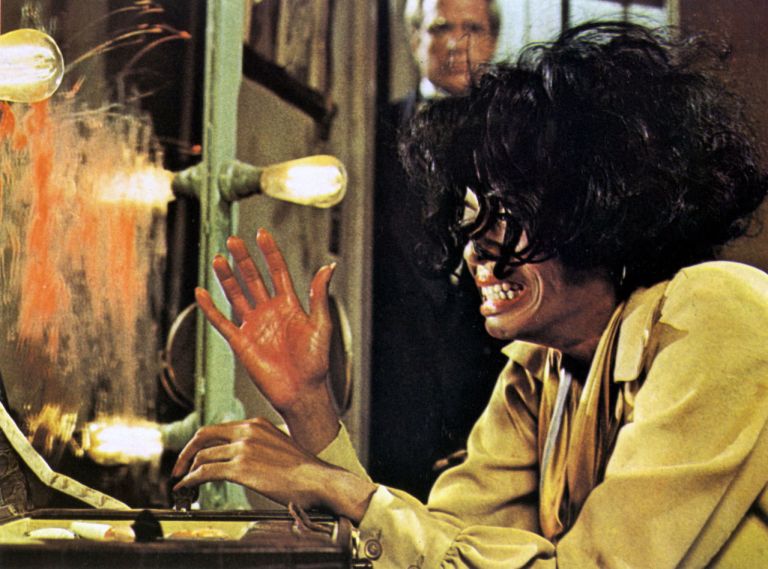
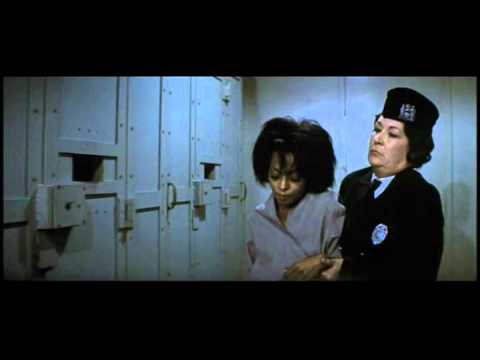
Diana also projected the unhappy and vulnerable side to Billie Holiday, which many didn’t know about, playing the role with such conviction and gutsy, gritty realism. Besides that, it’s also, as intended, a wonderful celebration of Billie Holiday’s legacy and her remarkable contribution to music.
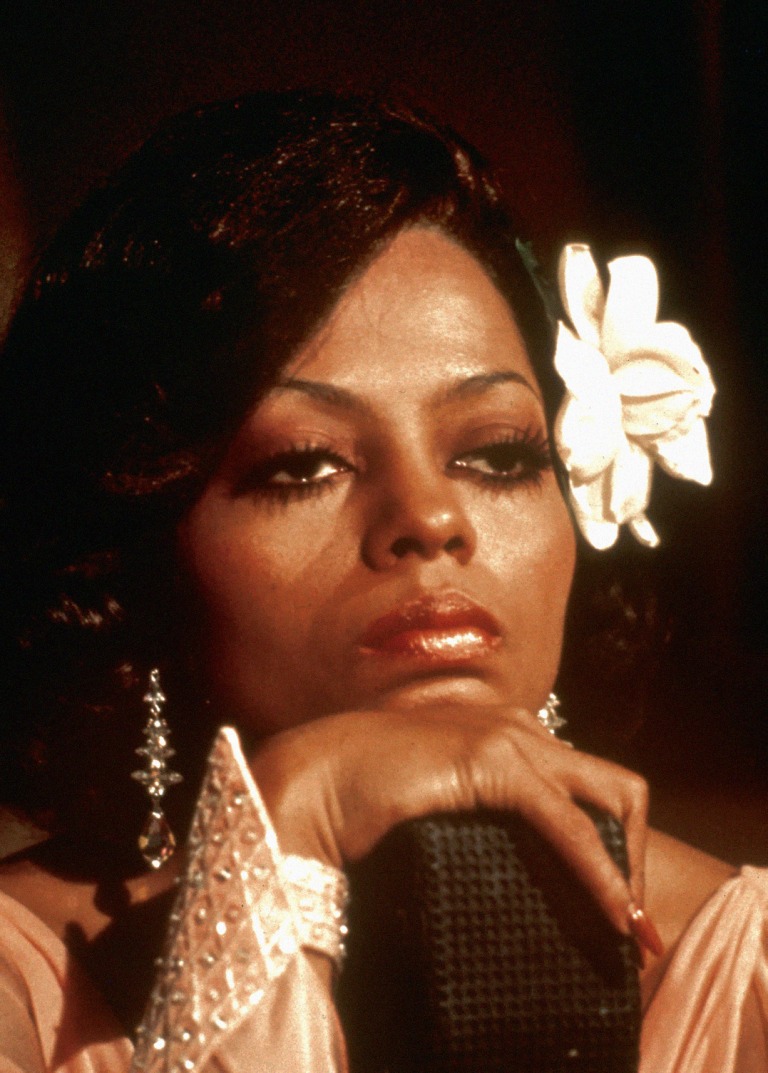
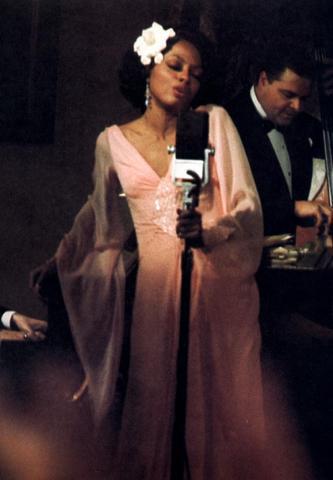
The final scene sees Billie performing at Carnegie Hall, the first black artist to do so, and as Diana sings God Bless The Child, press clippings are shown that reveal yet more tragic incidents in Billie’s life after this triumphant event, revealing there was, in fact, no happy ending for Billie.
Jay Weston remembers the emotional final sequence: “That last scene where she’s at Carnegie Hall and the camera pulls back as she’s singing My Man. I mean, I cry every time I see it, and I’ve seen it a thousand times!”
In fact, the original ending had Louis walk out of Billie’s life while she’s still performing on stage. Billie’s agent asks Louis, ‘What do I tell her?’ Louis replies, ‘Just goodbye. Billie will understand.’ This was cut from the ending, and in the film, all you see is Louis watching Billie perform with tears in his eyes.
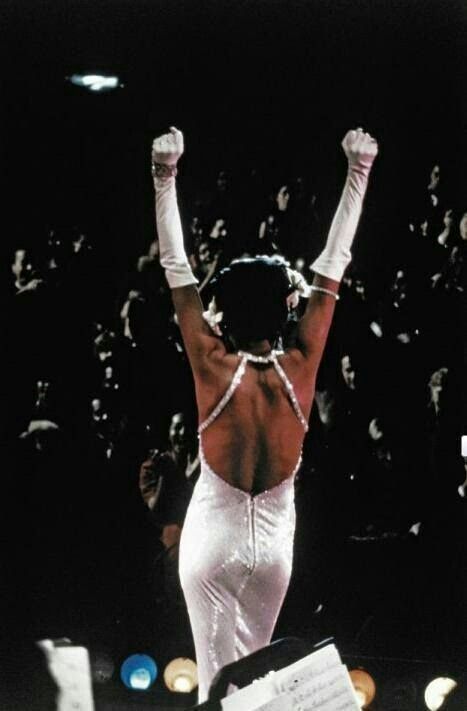
Producer Jay Weston had nothing but affectionate praise on Diana: “She’s much a pro as I’ve ever worked with in twenty years of film-making. She’s the most incredible actress I’ve ever worked with. She was the most disciplined, the most professional. I never had one moment’s problem with her. She exceeded all my expectations.”
It seemed the only problems on set when filming were between Berry Gordy and Furie. Having put up the cost for the film, Berry wanted a more of a creative input. This didn’t go down well with Sidney as he saw this as interference, and at one point, he walked off the set. Berry agreed to back off and let Sidney continue without constantly trying to get involved, and from there on there was no more trouble.
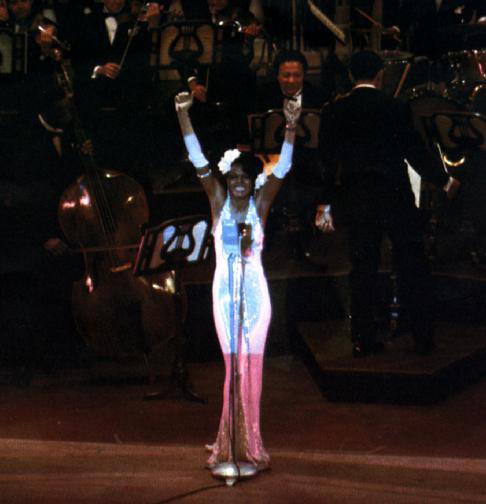
Berry Gordy said of Sidney years later: “Only in retrospect have I come to fully appreciate what a hero Sidney Furie was. I learned so much from him. A masterful director, he took the most complicated emotional scenes and brought out the best in the actors. He not only gave his all to making this film, but he came to tolerate, understand, and eventually love our relationship.”
Lady Sings The Blues was finally released in October 1972, opening in New York City. Diana was unable to attend the premiere as she was pregnant with her second child, Tracee, who was born three days after the event.
She was devastated by having to miss out on all the fun and excitement and waited at home, anxiously awaiting Berry Gordy’s call. “Berry described the premiere for me in one word. ‘Proud’. He said everyone we worked with was just so proud of everything about this film. I felt that way, too…I hated missing that premiere.”
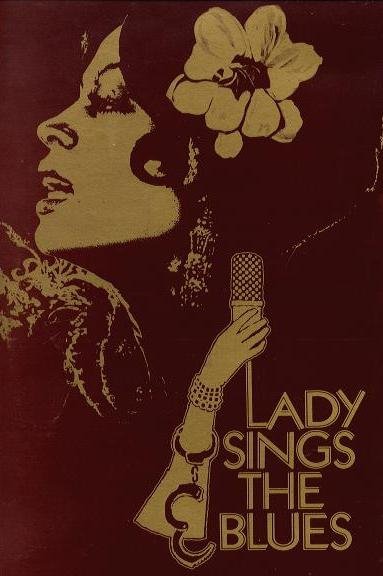
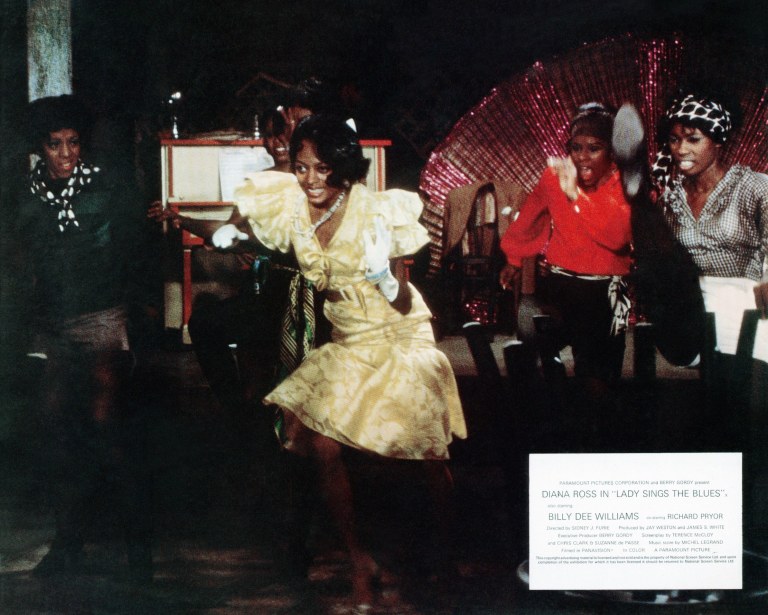
The reviews appeared in the press the next day. Some had been sceptical about Diana’s ability to play the role because she neither sounded nor looked like Billie Holiday.
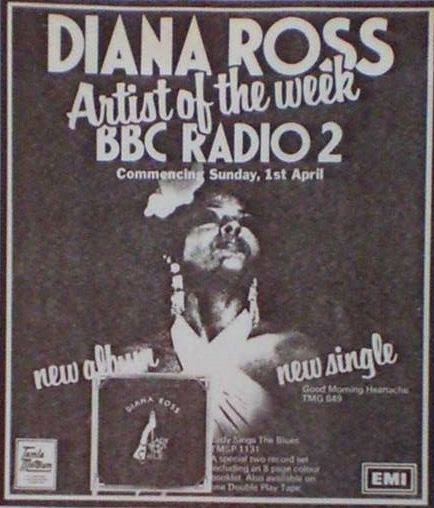
Jazz critic Leonard Feather wrote in the Los Angeles Times: “Billie Holiday was my idol and friend. I saw her young and enthusiastic, tired and ravaged, sober and stoned, friendly and furious, calling in the middle of the night over some real or imagined vexation. But most of all, I recall a voice no woman alive is ever going to duplicate, not even Diana Ross. It was then with misgivings to the point of outright prejudice that I headed for the screening of this motion picture. To my amazement, this newcomer destroyed almost all of my reservations. Miss Ross brought to her portrayal a sense of total immersion in the character. Dramatically, this is a tour de force in a film that reached poignant highs and lows.”
Leonard Feather then went on to point out in his review what he called: “… anachronisms, distortions, errors of omission and commission.”
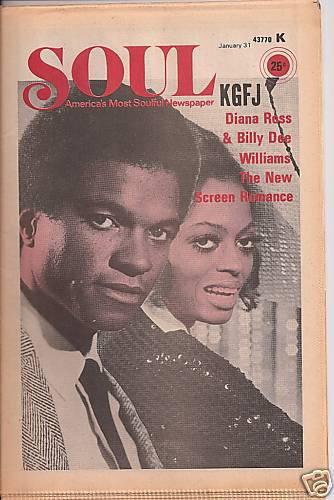
In response, Sidney Furie said: “Leonard Feather made a big thing over the fact that this movie wasn’t a true story, but we know his wife liked the movie and that’s who it was for. The people. Berry told Diana when we first started that white people don’t worry about changing the facts to make good entertainment. Why should we be saddled with it just because Billie Holiday was black? We didn’t make anything up. The film was based on truth.”
Many of the reviews pointed out the fictionalisation of many of the events in the film, but all were unanimous in their praise for Diana.
In the weekly music paper, Melody Maker, they wrote: “In many ways, this a pointedly anti-white film. Billie is first turned on to junk by one of the white musicians in the band with whom she’s touring. Miss Ross bears no resemblance to Billie Holiday, either facially or vocally, and this movie is true to the great singer’s life only in skeletal detail. Its tone, like its colour, is glossy. The actual pockmarks are filled in. It’s Diana Ross acting out something altogether different. Once or twice, she’ll tug at your heart in a way The Supremes never did. Wherever the eye of the film makers might be, the heart of its star is in the place.”
Variety said that “for the bulk of general audiences, the film serves as a very good screen debut vehicle for Diana Ross, supported strongly by excellent casting, handsome ’30s physical values, and a script which is far better in dialog than structure.”
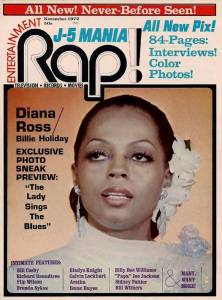
Chicago Tribune wrote: The fact that ‘Lady Sings the Blues’ is a failure as a biography of legendary jazz singer Billie Holiday doesn’t mean it can’t be an entertaining movie. And it is just that—entertaining — because of an old fashioned grand dame performance by Diana Ross, late of the pop-rock scene, in the title role.”
The New Yorker were definitely won over by Diana Ross, stating “when the movie was over I wrote ‘I love it’ on my pad of paper … Factually it’s a fraud, but emotionally it delivers. It has what makes movies work for a mass audience: easy pleasure, tawdry electricity, personality—great quantities of personality.”
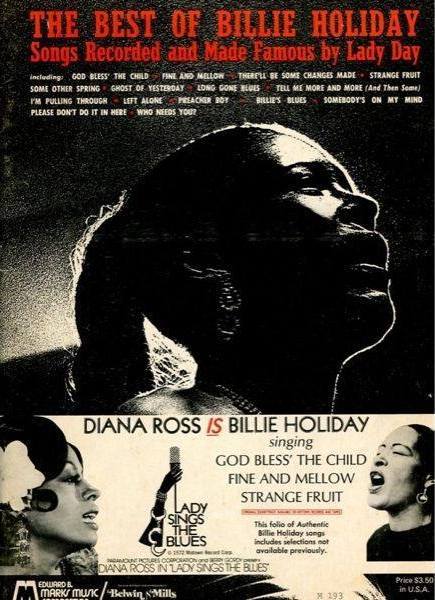 Roger Egbert hailed Diana Ross as giving “one of the great performances of 1972” before going on to say “for the bulk of general audiences, the film serves as a very good screen debut vehicle for Diana Ross, supported strongly by excellent casting, handsome ’30s physical values, and a script which is far better in dialog than structure.”
Roger Egbert hailed Diana Ross as giving “one of the great performances of 1972” before going on to say “for the bulk of general audiences, the film serves as a very good screen debut vehicle for Diana Ross, supported strongly by excellent casting, handsome ’30s physical values, and a script which is far better in dialog than structure.”
The New York Times were most complimentary about Ms.Ross even if their feelings weren’t quite the same about the film itself, describing her as “an actress of exceptional beauty and wit, who is very much involved in trying to make a bad movie work … her only apparent limitations are those imposed on her by a screenplay and direction seemingly designed to turn a legitimate legend into a whopper of a cliché.”
A critic for Disc: “In the film, she’s seen to have one lover while in her life, Billie had two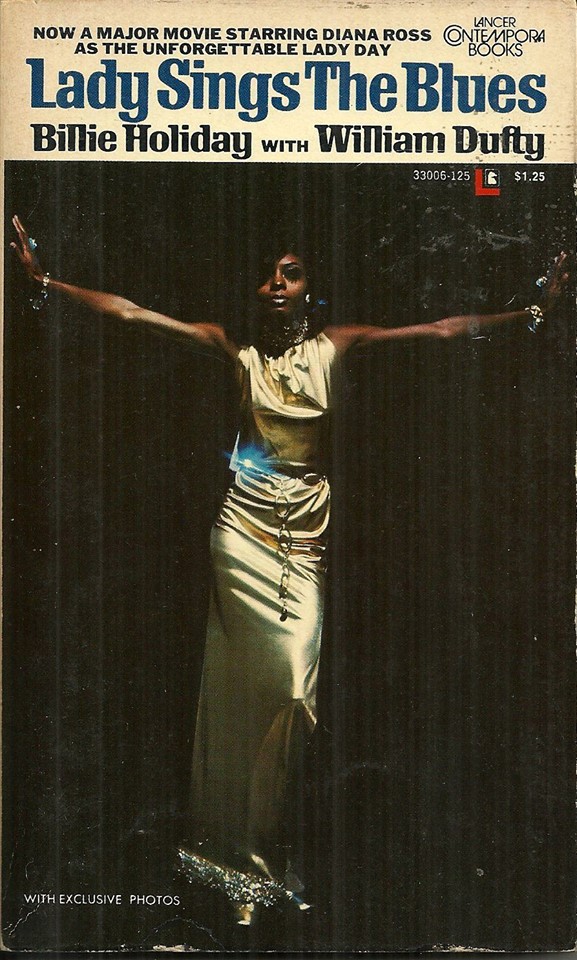 husbands and more than a few relationships. One of them was with tenor saxophone giant, Lester Young, who according to the film, never existed. It was, in fact, Billie’s first husband who introduced her to heroin while in the film, since her first husband didn’t exist, it’s the white band leader who does the deed. Another fault is the film’s ending which tries to compress the sordid events of Billie’s last year into superimposed headlines during her performance at Carnegie Hall in an effort to close the film on a note of triumph and joy. There was triumph but very little joy in Lady Day’s life. But, and this is a very big but indeed, Diana Ross’s performance carries the film so convincingly, she’ll certainly be a big contender for the Best Actress Academy Award next spring.”
husbands and more than a few relationships. One of them was with tenor saxophone giant, Lester Young, who according to the film, never existed. It was, in fact, Billie’s first husband who introduced her to heroin while in the film, since her first husband didn’t exist, it’s the white band leader who does the deed. Another fault is the film’s ending which tries to compress the sordid events of Billie’s last year into superimposed headlines during her performance at Carnegie Hall in an effort to close the film on a note of triumph and joy. There was triumph but very little joy in Lady Day’s life. But, and this is a very big but indeed, Diana Ross’s performance carries the film so convincingly, she’ll certainly be a big contender for the Best Actress Academy Award next spring.”
The late music critic Ralph Gleason, who had been a personal friend of Billie’s, wrote for Rolling Stone: “I never thought someone so young could have loved Billie so much. How glad I am now to have been wrong.”
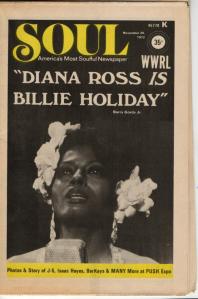 And William Wolf from Cue magazine wrote: “Diana Ross should be the biggest movie superstar to come along since Barbra Streisand, and she possesses deeper acting ability. No question about it. Miss Ross is a hit, and her movie is a hit.”
And William Wolf from Cue magazine wrote: “Diana Ross should be the biggest movie superstar to come along since Barbra Streisand, and she possesses deeper acting ability. No question about it. Miss Ross is a hit, and her movie is a hit.”
Advertisements everywhere screamed ‘Diana Ross IS Billie Holiday’. The triumphs continued when Diana was treated like a royalty at the Cannes Film Festival in France. She was taken to the Carlton Hotel in a 1923 Rolls-Royce (accompanied by motorcycle police escorts). Twenty thousand flowers next to the Carlton hotel spelt out ‘Welcome Diana Ross!’ She staged a concert at the Palais Des Festival for two thousand of her peers. Red carpet was laid out for her as she walked to the concert hall, heralded from the Garde Republican who lined up from the Calais to the Palais. Diana was backed by the Nice and Paris symphonies and received eight standing ovations throughout the concert. Then Lady Sings The Blues was shown to the packed house. Diana and her film were instant smash hits. After the screening of the film, she received a five-minute standing ovation.
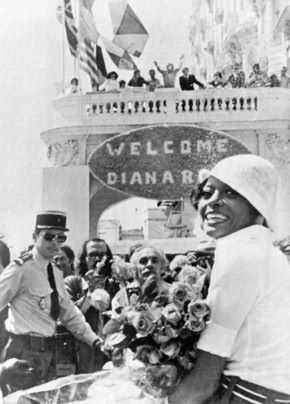
When, backstage, Diana came face to face with one of her idols—Josephine Baker—Josephine whispered to Diana: “Honey, you sure showed them what acting, what show business is all about.” The president of Cannes, M. Favre Lebret, later hosted a small private supper for her—a first for the president to ever do such a thing. In attendance that night were the likes of Jack Nicholson, Ingrid Berman and Marcello Mastroianni. Upon Diana’s arrival, the band began playing My Man. Lady Sings The Blues also broke several house records in Japan and at the Venice Sound Festival was named Best International Film, and Diana won for Best International Actress Of The Year.
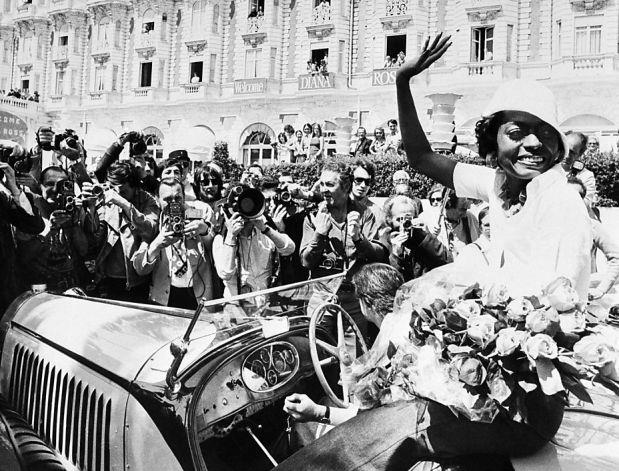
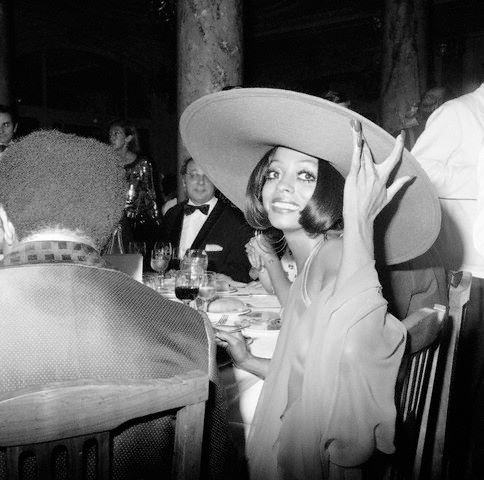
The British premiere took place at Shaftesbury Avenue’s ABC-1 cinema in London, screening at midnight. Among Diana’s television appearances in promotion of the film included BBC 2’s Film ’73 and ITV’s David Frost Programme.
Diana and the film went on to be showered with awards, which included three NAACP Image Awards, Actress of the Year, Motion Picture of the Year, and Actor of the Year for Billy Dee Williams. Diana also scooped the Golden Globe Best New Star Award, Cue magazine’s coveted Entertainer of the Year and then, the icing on the cake, being nominated for Best Actress at the Oscars. Not only that but Chris Clark, Suzanne De Passe and Terence McCloy were nominated for their screenplay, Michel Legrand for the music score and Gil Askey for the orchestration.

As far as the Academy Awards were concerned, the only awards won by a black actor was Sidney Poitier, and Hattie McDaniel was the recipient of an Oscar for Best Supporting Actress for her role in the 1939 classic Gone With The Wind. This was the first time in the Academy’s history a black woman had been nominated in the Best Actress category, and then in 1972, two were nominated: Diana for Lady Sings The Blues and Cicely Tyson for Sounder. The other nominees in this category were Maggie Smith for Travels With My Aunt, Liza Minnelli in Cabaret and Liv Ullmann for The Immigrants.
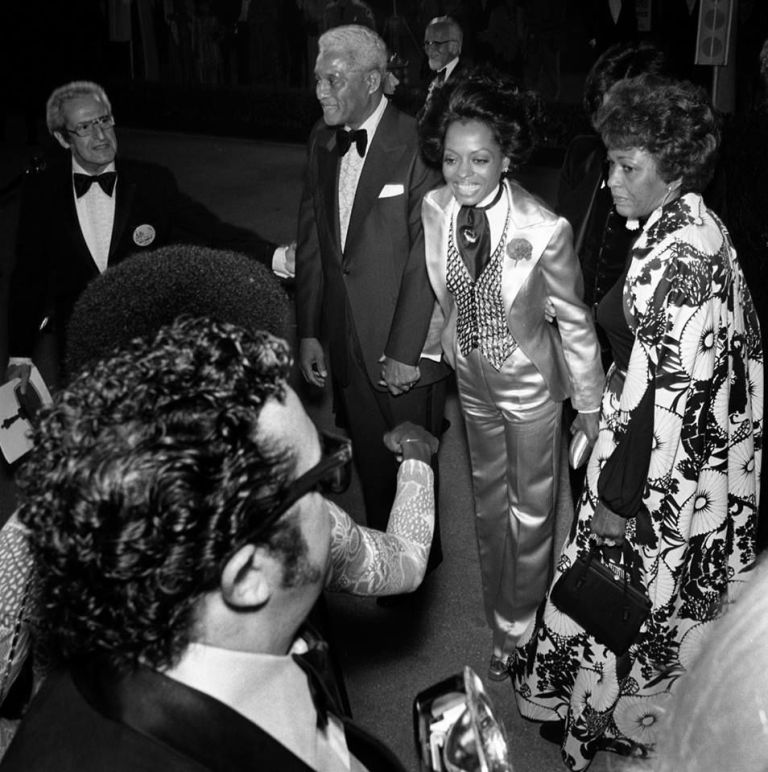
Diana admitted at the time: “Yeah, I would love the Academy Award. It’s funny because when I was doing this film, all I ever thought about was doing a good job. I wanted to prove myself as an actress. An Oscar never even entered my mind. But now that I’m up for this one and I know that a black actress has never won in this category, I have to admit that I’m excited. I’d like to win, just because it’s never been done. If it doesn’t happen? I’ll be disappointed, I know that. I’ll probably cry a lot. It wouldn’t be the first time, though.”
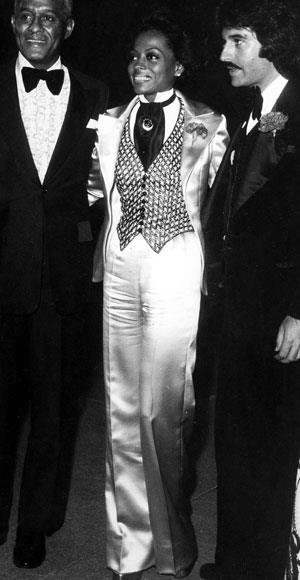
On 26 March 1973, the evening before she was to celebrate her twenty-ninth birthday, Diana hosted her own party at her Beverly Hills Home.
Ron Miller recalled to Taraborelli: “Later on, at about four in the morning, Diana had all the guests go to the upstairs of the house, where one of the walls had been papered white so that everyone could write something on it in honour of the occasion. While everyone was having a ball, I noticed Diana standing off by herself in a corner and went over to see what was wrong. She asked me, ‘Do you think I’ll get it?’ and I said, ‘The bottom line is that it doesn’t matter whether you get it or not because creatively you definitely deserve it. But you may not get the award because chances are they’ll give it to Judy Garland. I told her Liza may get the award because they never gave one to her mother, and it would be Hollywood’s way of appeasing its own guilt.’”
Berry Gordy went to town on an advertising campaign, hoping to sway the Academy members to choose Diana as the winner of the Award she was up for. Some said this tactic turned the Academy off from selecting Diana, as it was such a transparent exercise.
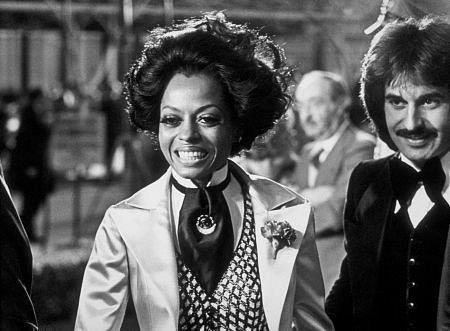
 The forty-fifth Annual Academy Awards were held on 27 March 1973 at the Dorothy Chandler Pavilion. Diana attended with her husband (Bob), Berry Gordy, and her mother and father, Ernestine and Fred Ross.
The forty-fifth Annual Academy Awards were held on 27 March 1973 at the Dorothy Chandler Pavilion. Diana attended with her husband (Bob), Berry Gordy, and her mother and father, Ernestine and Fred Ross.
On Liza Minnelli’s arrival, she declared to the press: “I’ve got just two words to say about the Oscar—Diana Ross.” Sadly, Diana lost out to Liza Minnelli for Cabaret, but, nonetheless, Diana had made her mark.
Sidney Furie said after the ceremony: “Diana should have won that Oscar, no doubt about it. Let’s face it, Liza was good in Cabaret, but the Oscars are supposed to be about achievement. What greater achievement can you think of than this girl coming out of The Supremes to play Billie Holiday in a classic performance? I don’t know if it was a racial issue or not. I do know, though, a lot of Academy voters didn’t even see our picture because they looked at it as an insignificant little black film, despite the rave reviews. As far as I’m concerned, no way would they have given the award to Liza if they’d all seen Lady Sings The Blues. No way!”

A voter on the Academy committee told columnist, James Bacon: “Diana Ross was a runaway cinch to win the Best Actress Award when she first was nominated. Then came those almost daily full-page ads in the trade papers. I still think Diana gave the best performance, but the only way we can stop this horrible circus is by protest vote. That’s why I voted for Liza Minnelli.”
Diana appeared on the cover of Life magazine in December 1972, a real coup for Motown’s press department.
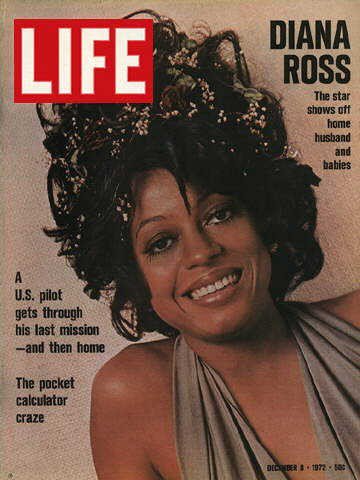
She told a reporter for the Philadelphia Inquirer that there were aspects to Billie that she could relate to: “The insecurities, the courage, the ups and downs, her spirit, the way she just wanted to live and be good at it. I get angry when all I see are pictures of her with tears in her eyes because I’m sure, I’m just sure, there weren’t always tears.”
In another interview twenty-eight-year-old Diana reflected on growing old: “A woman starts worrying about her age after she has two children and they begin to take up all her time. You look at yourself, and you don’t see the teenager you used to see. You see a woman. I guess the film did that to me, too. When I looked up at that movie scene and saw how I was magnified, it frightened me.”
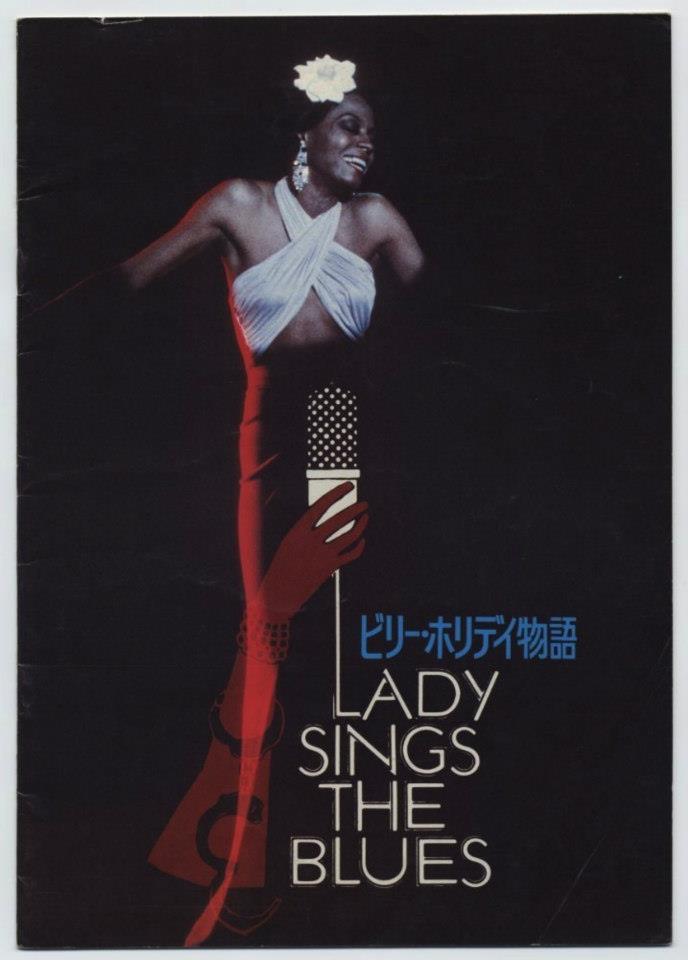
One of the many influences of Lady Sings The Blues was that it brought Billie Holiday to a whole new generation, and following the film, there were several reissues of her recordings. It also saw her original autobiography republished. The most lasting legacy of the film is what it meant to black cinema. Films with mainly black casts had usually been low-budget affairs and were predominately seen by black audiences. Just as Diana Ross had done with The Supremes, the film was one of the first to enjoy major crossover success and made conservative Hollywood financiers sit up and pay attention. Now they could see that films with mainly black casts had just as much earning potential as films with white casts.
Respected writer Donald Bogle wrote at the time: “There had never been (still hasn’t been) a black movie like it … something new comes to American cinema … Lady Sings The Blues takes black romance the full, larger-than-life distance. For the first time in a major motion picture, we see a black couple who meet, court, fight, make up, fight again, is more often than not cautious about commitment. In the most famous sequence, the two (Ross as Billie, Williams as Louis) sit until the early hours of the morning in a nightclub, talking, trying to outfox one another. It is quite conceivably the most real romantic moment between a black man and black woman we have seen in Hollywood film.”
This was a tremendous acting debut, and everyone agreed this was going to be an extremely hard film to follow. Lady Sings The Blues led to thirty film offers, but she was signed to Paramount for at least one other film. There was much speculation over to what film role Diana would do next.
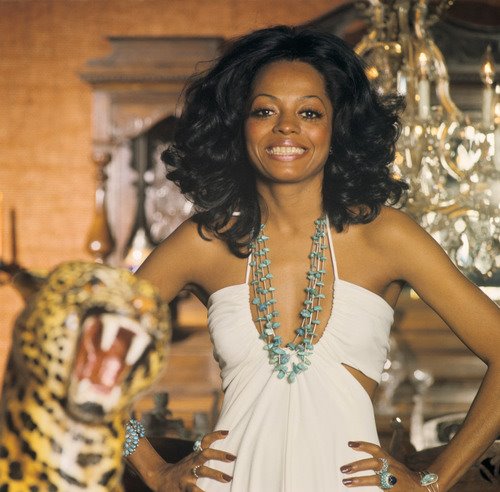
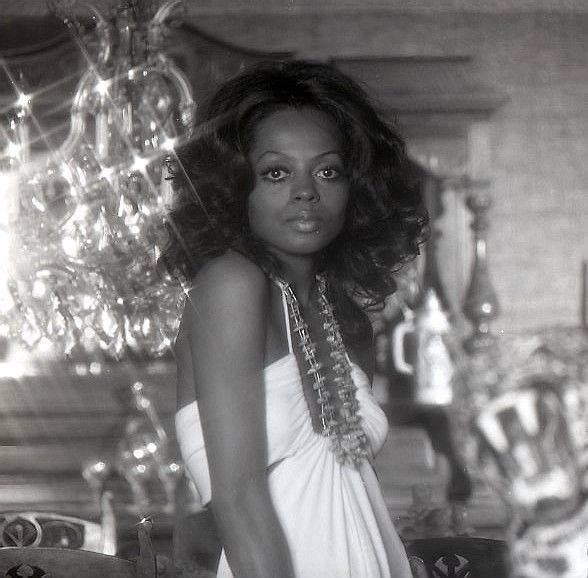
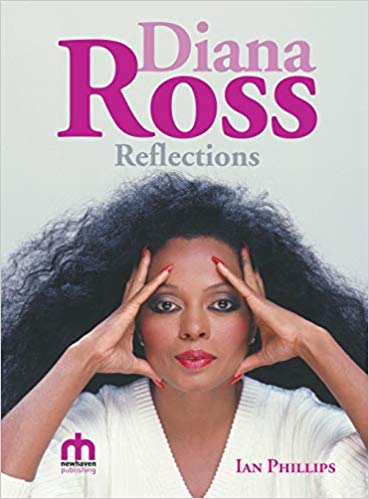
This was a chapter from my book Diana Ross: Reflections
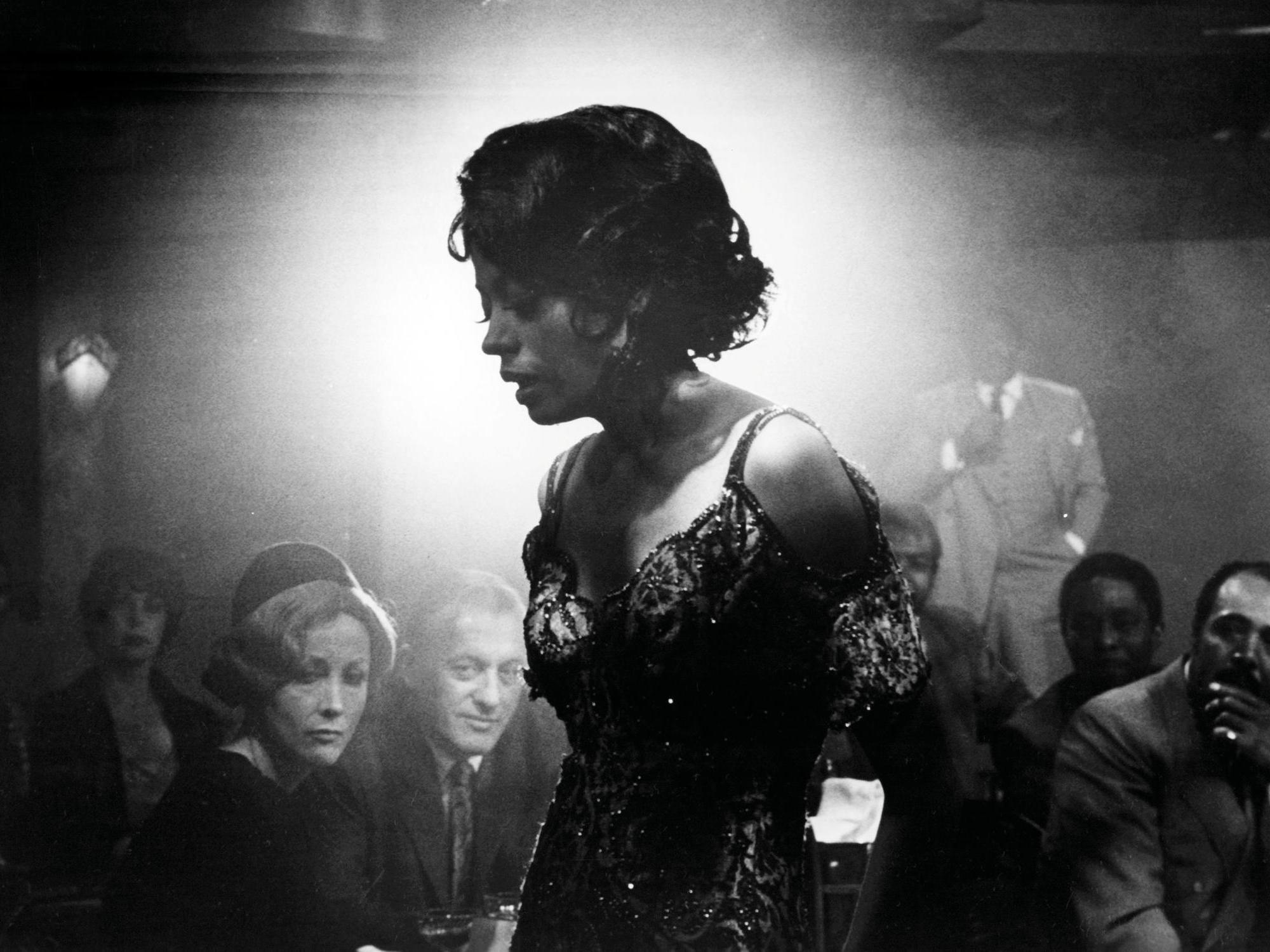
That was a great article. I am a big fan of Diana and enjoy the books and comments from you.
LikeLiked by 1 person
Diana Ross was an awesome actress in this film…She exceeded every expectation…I love Diana Ross….
LikeLiked by 1 person